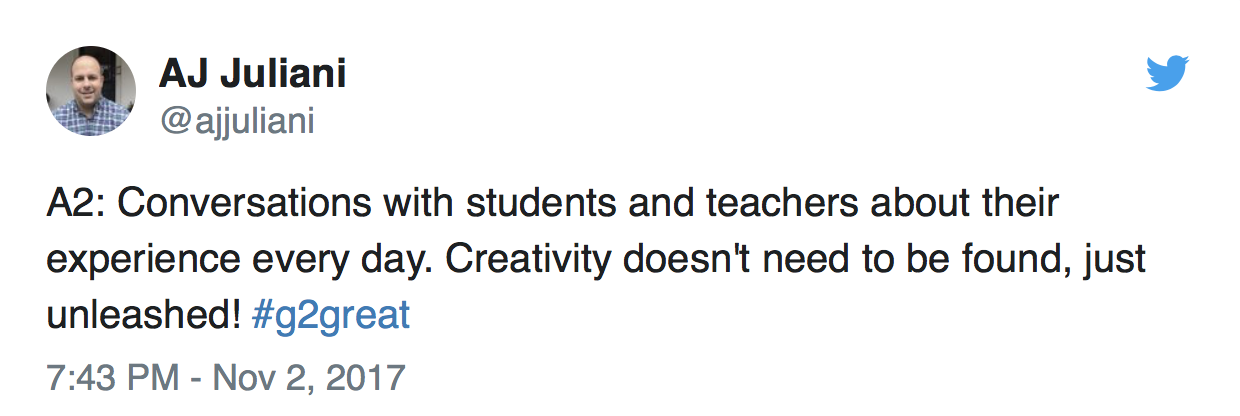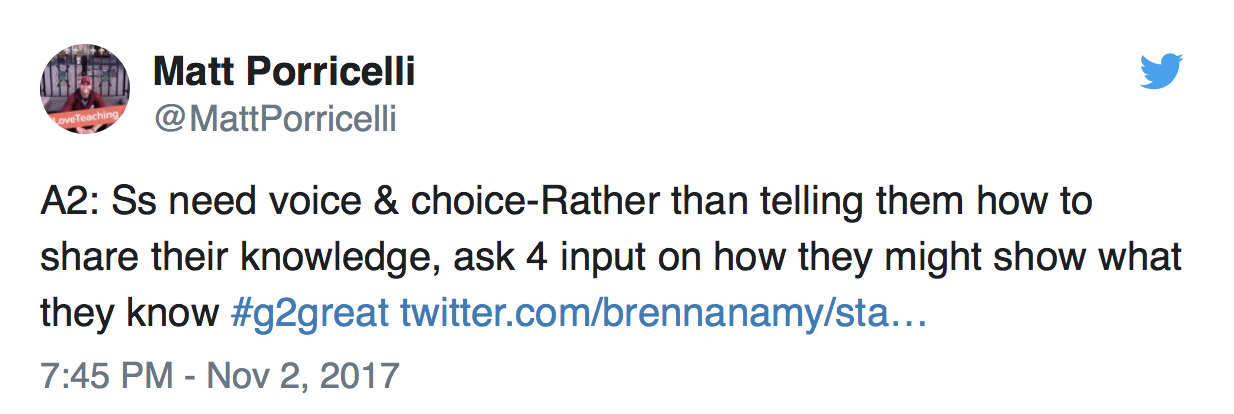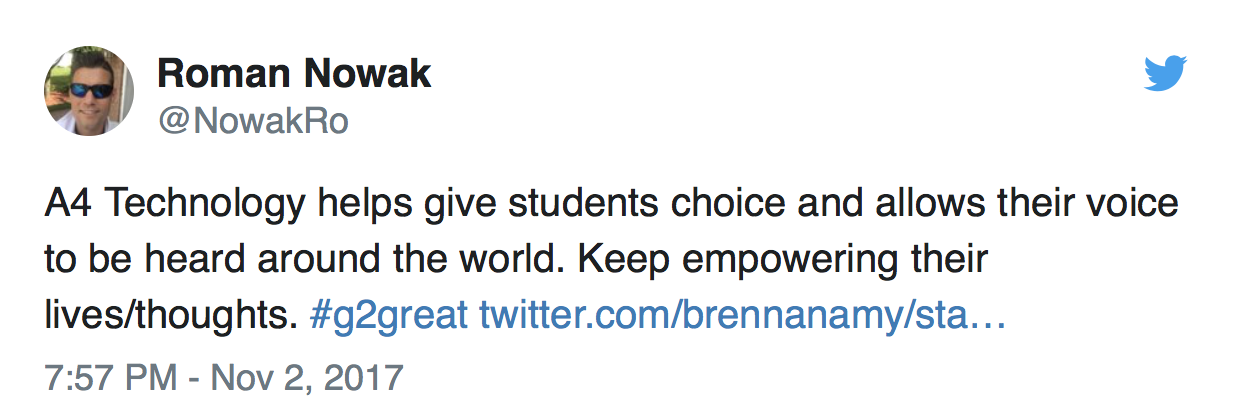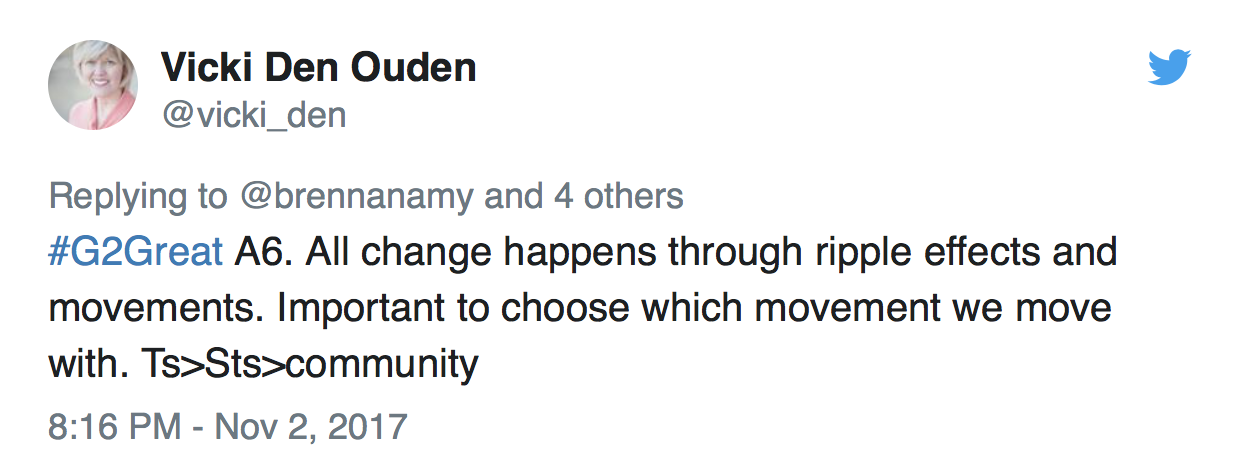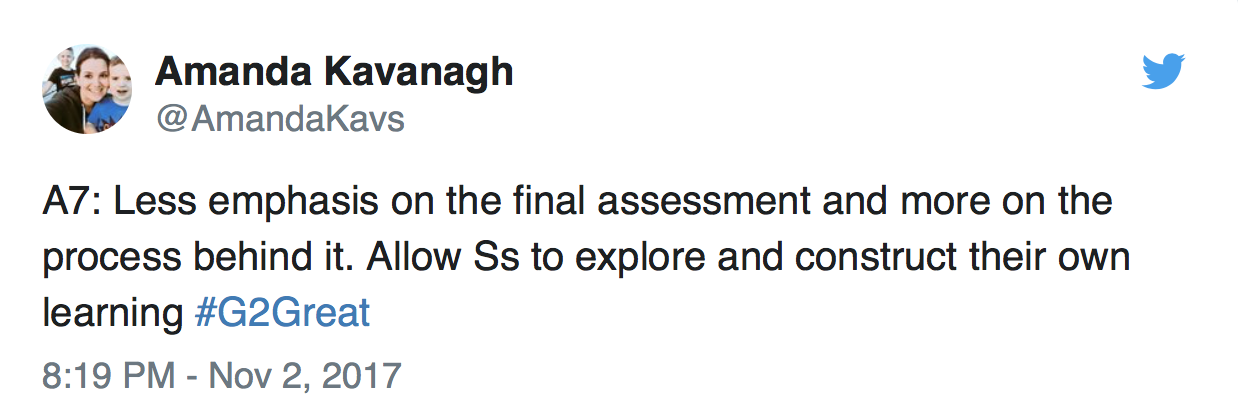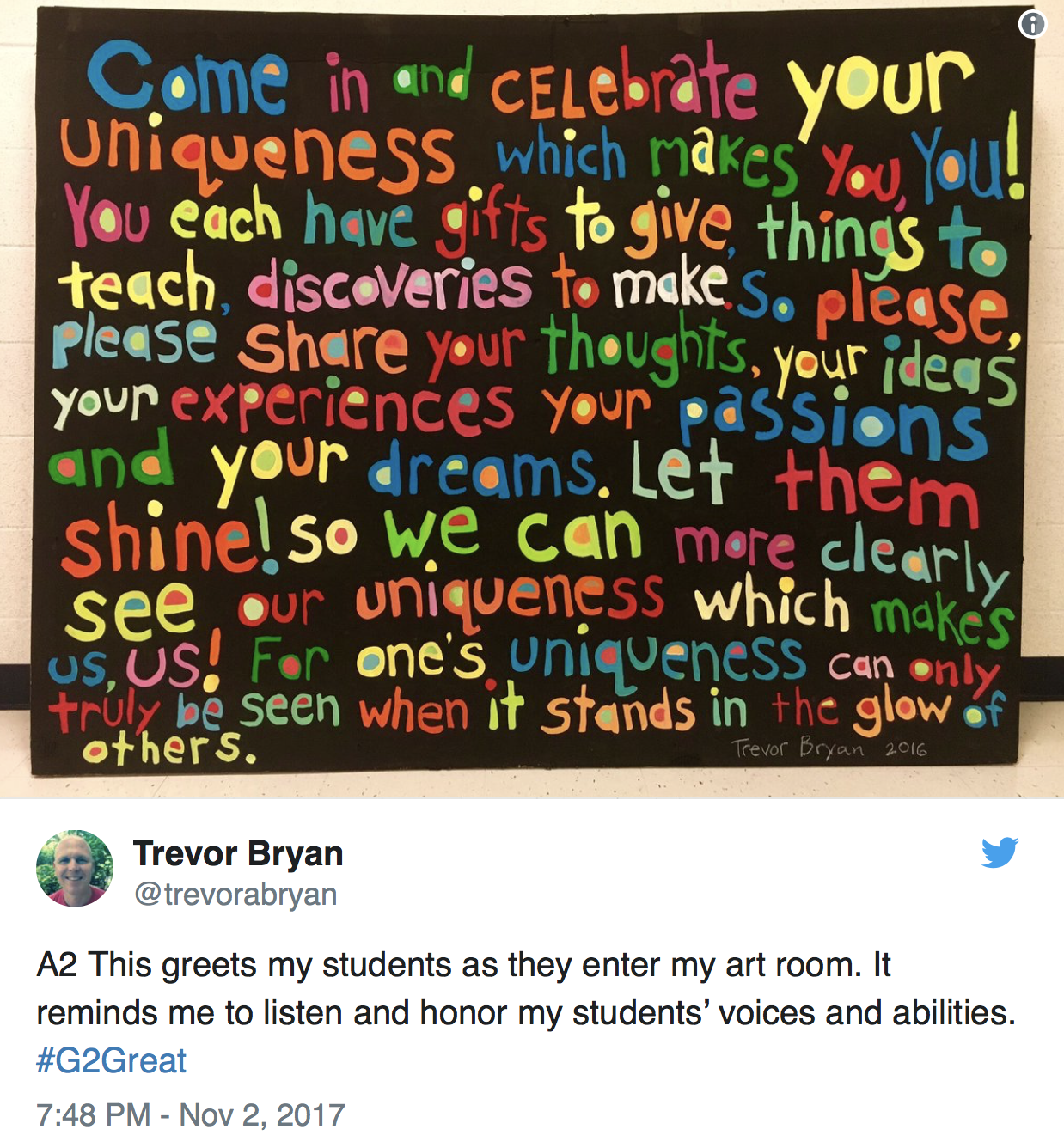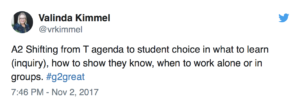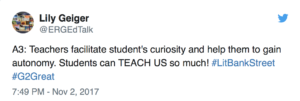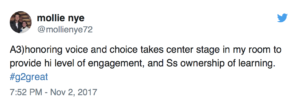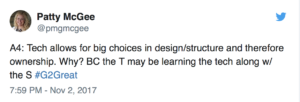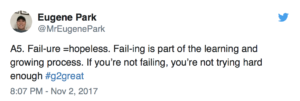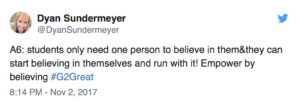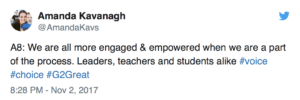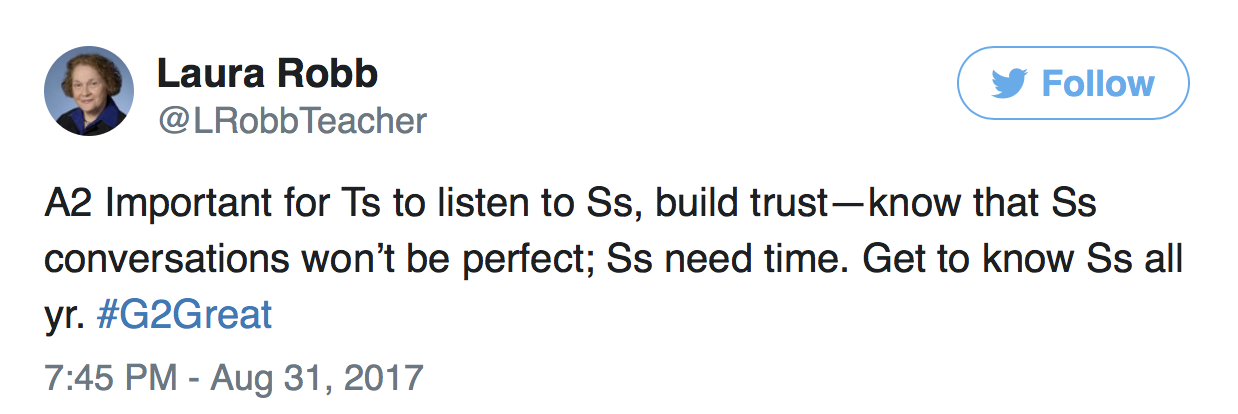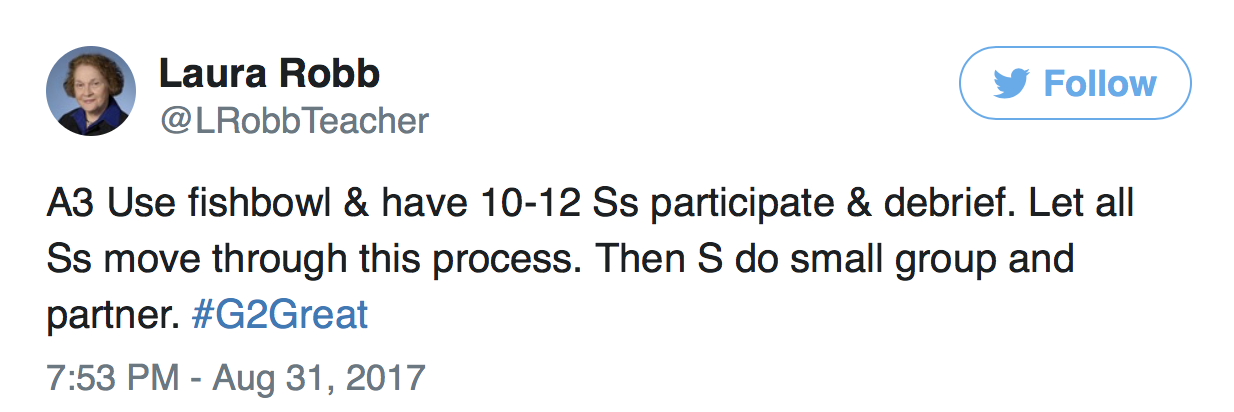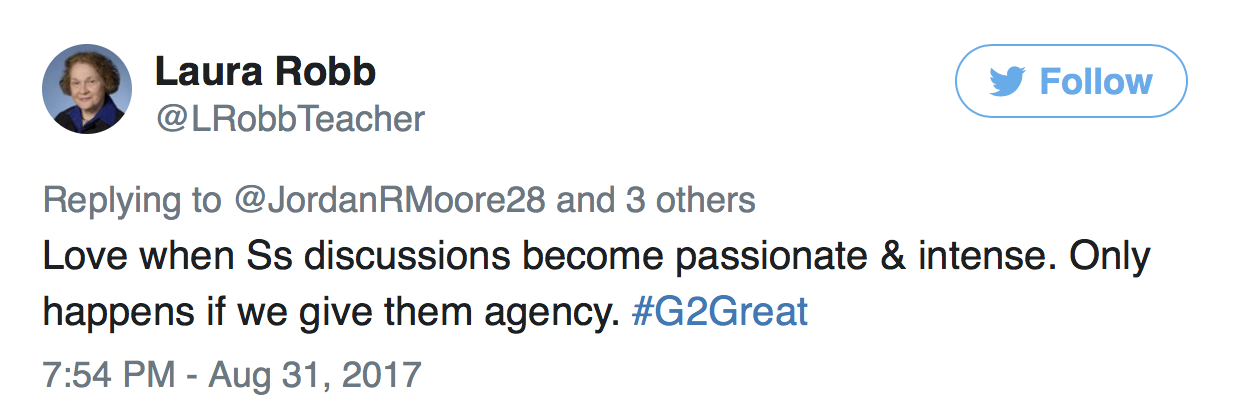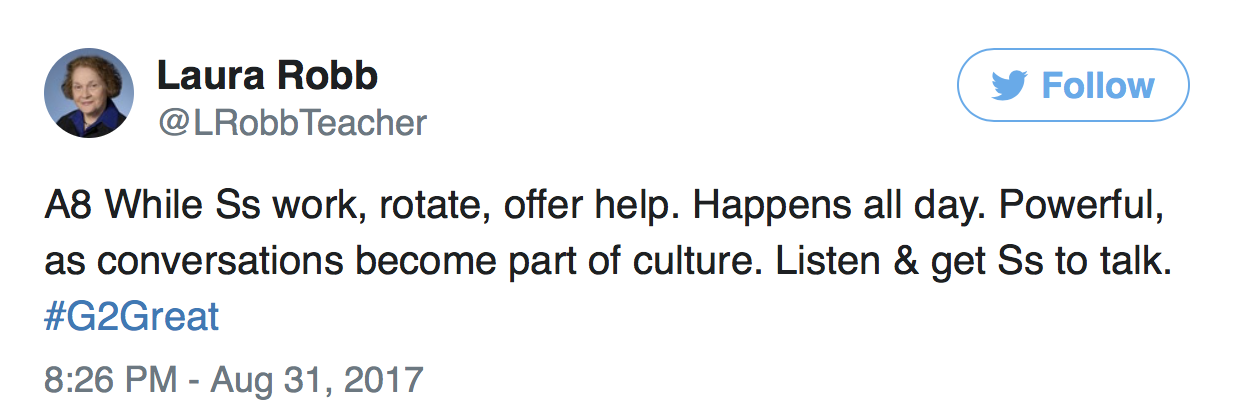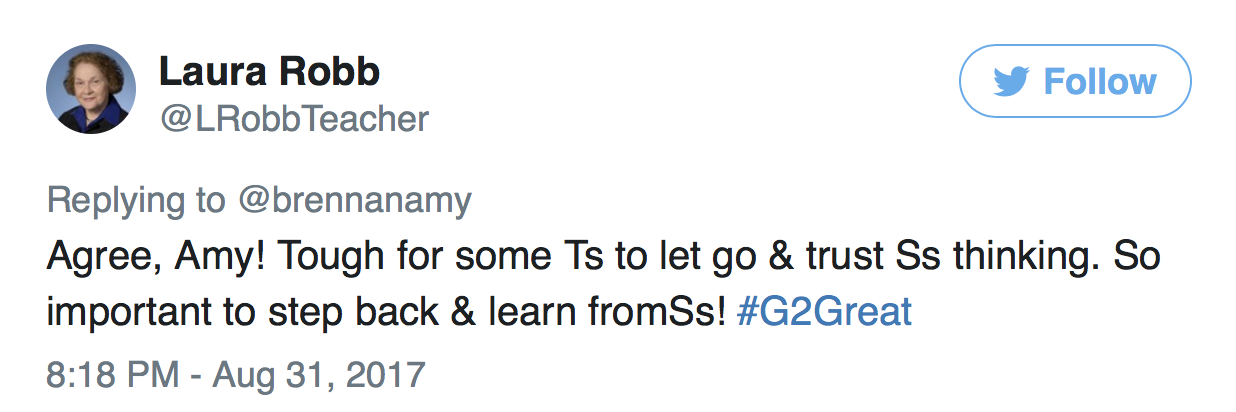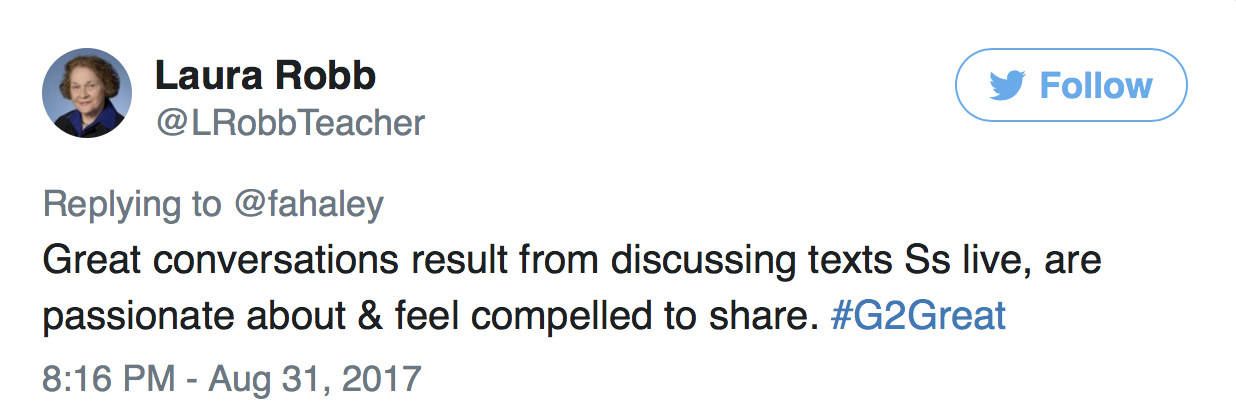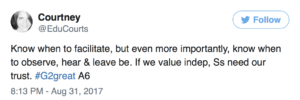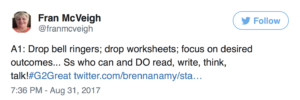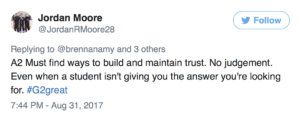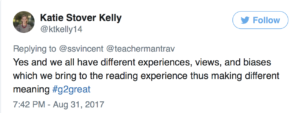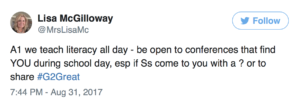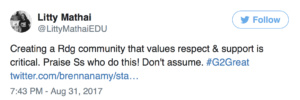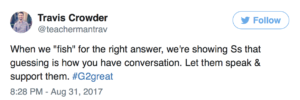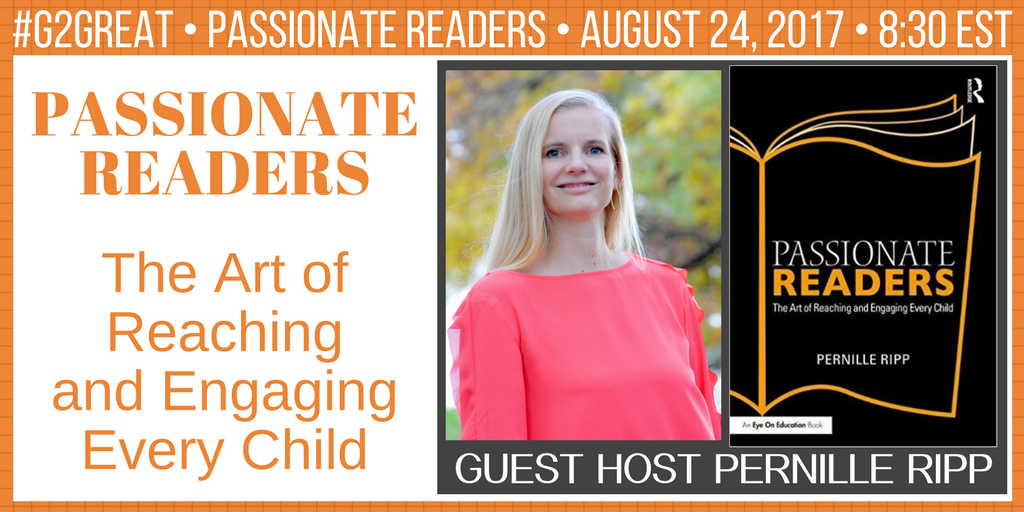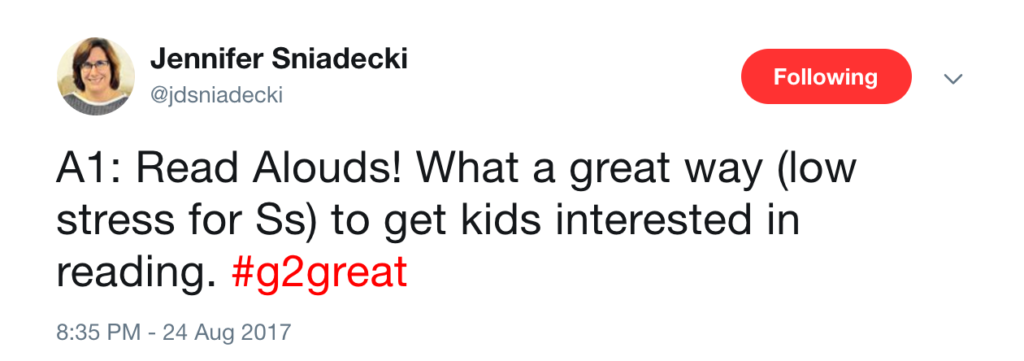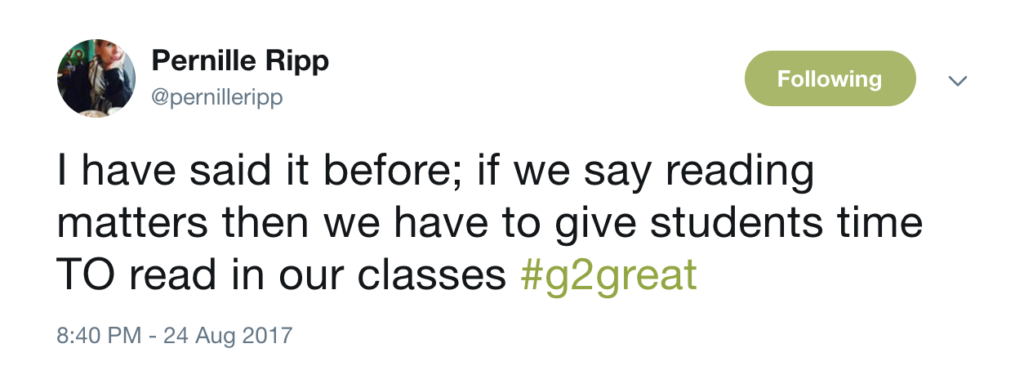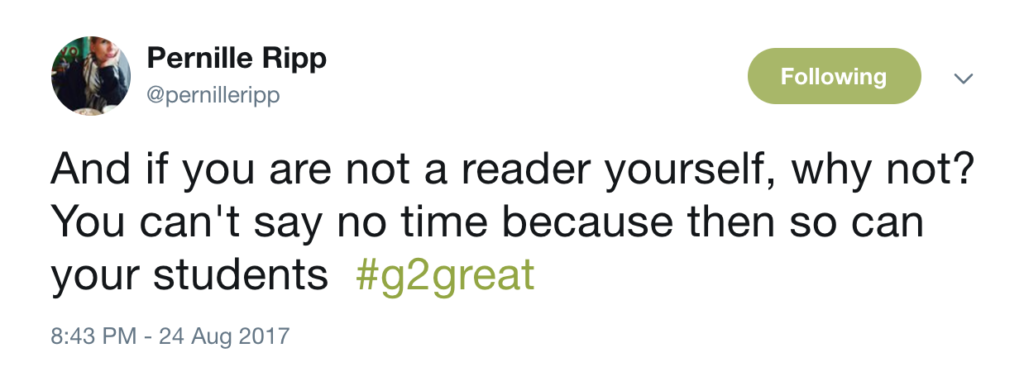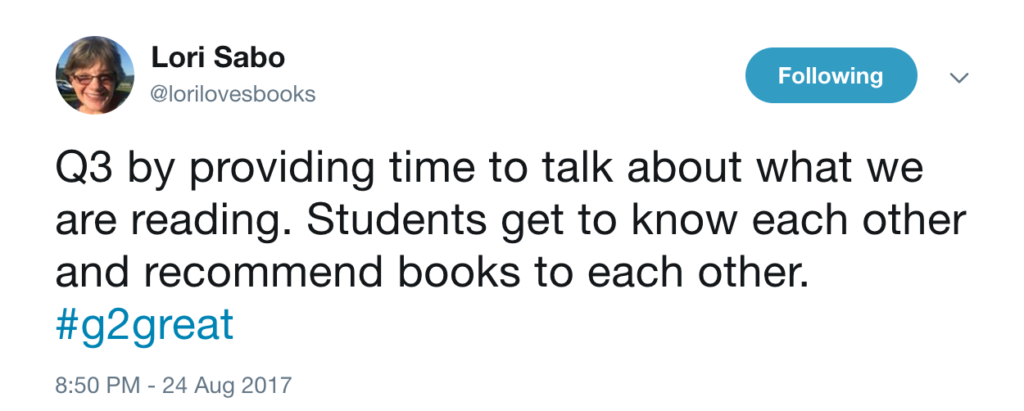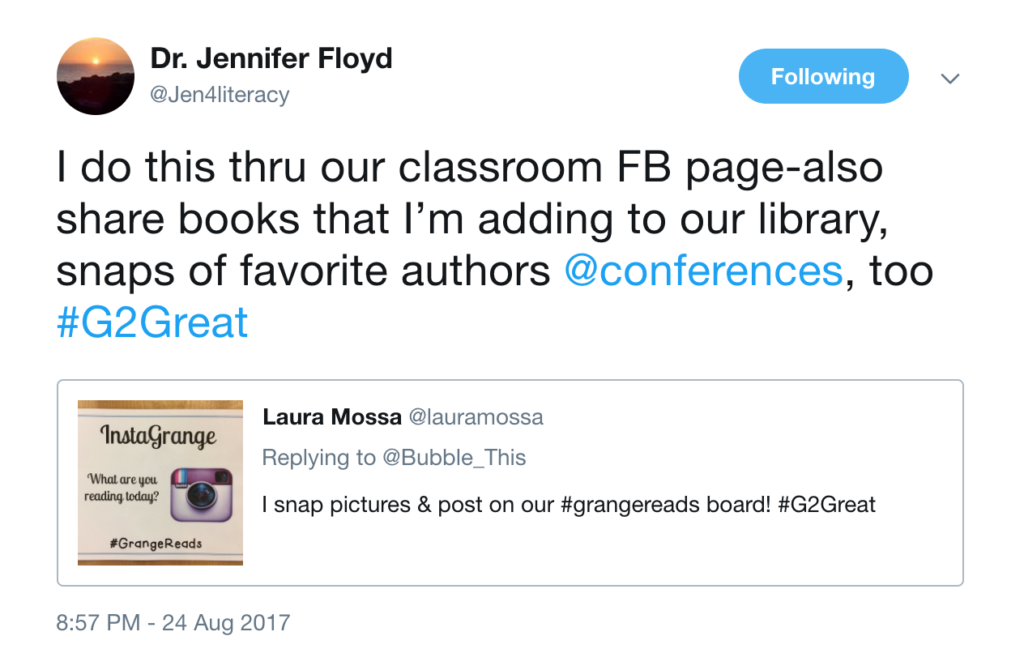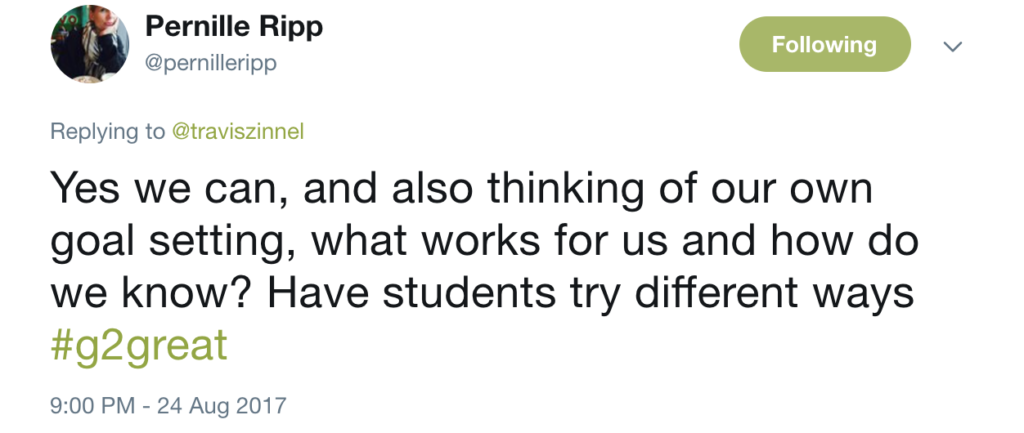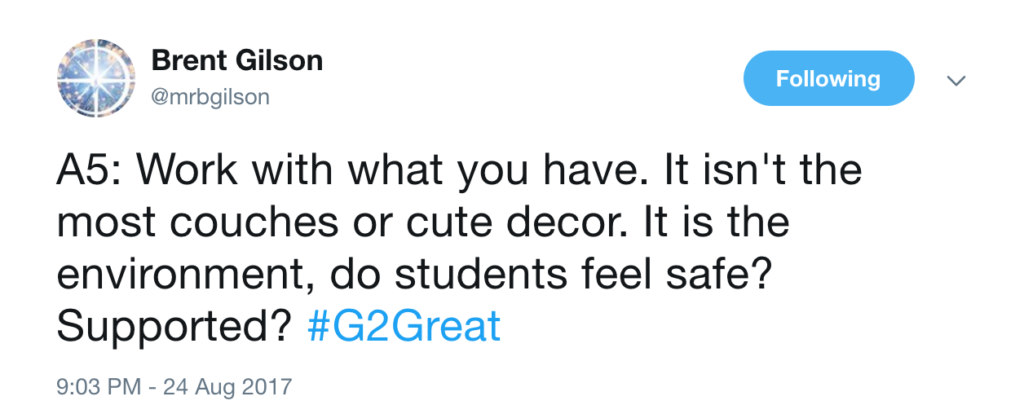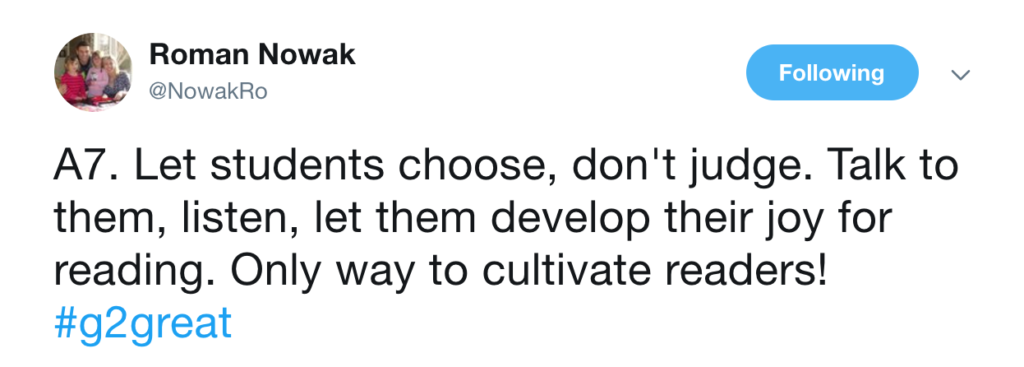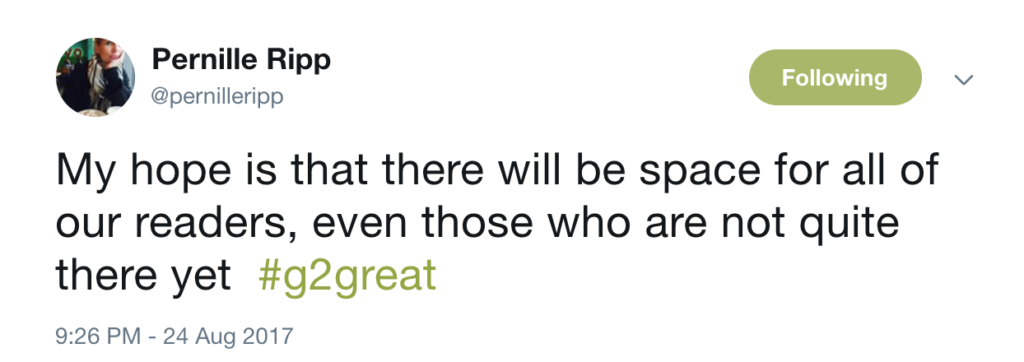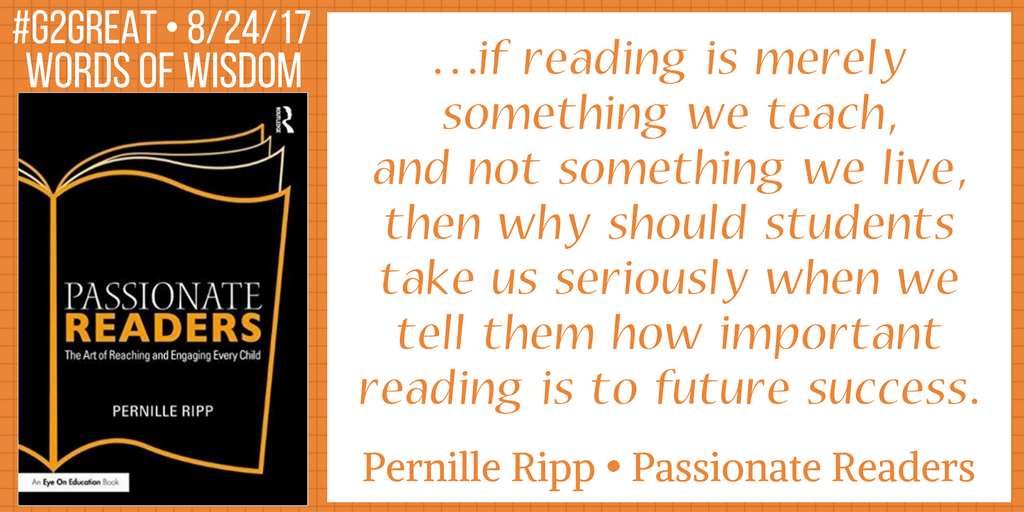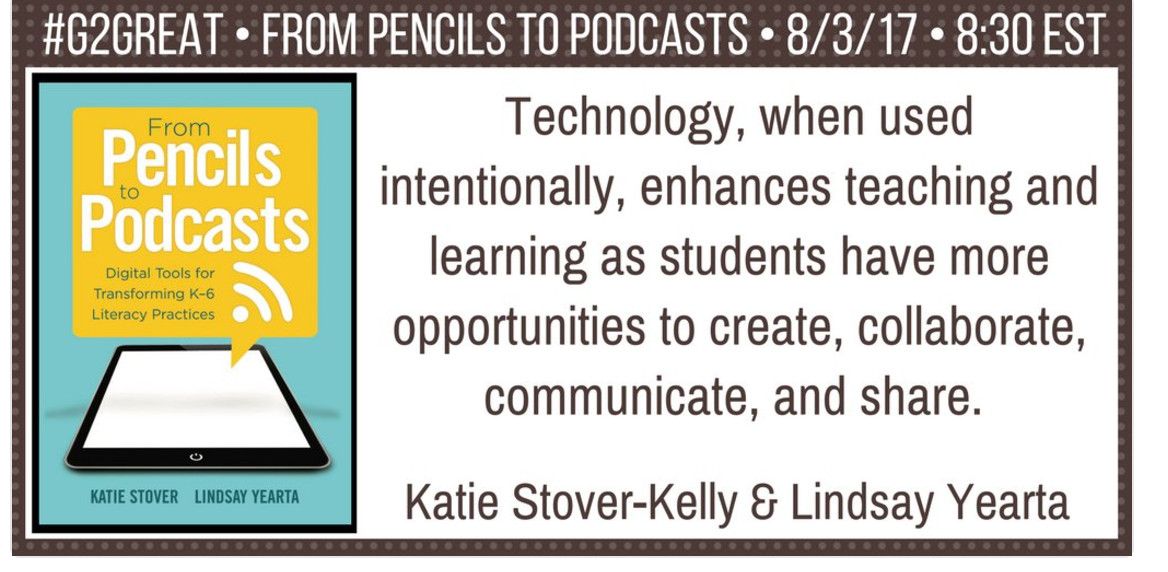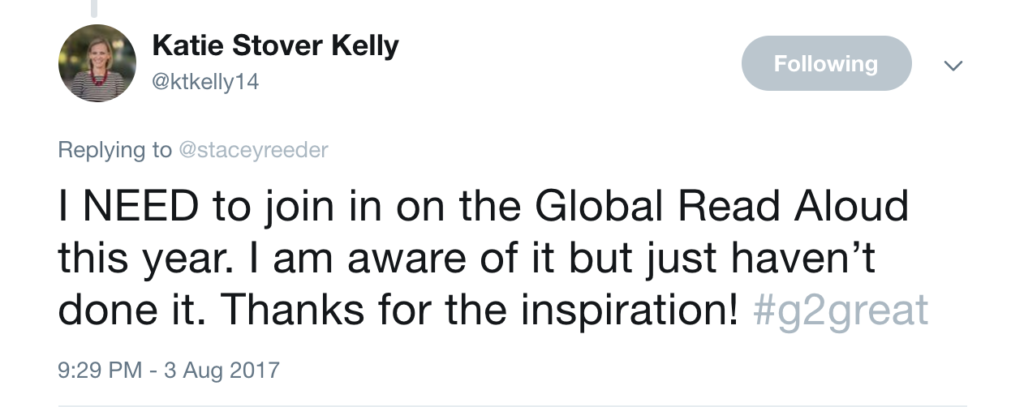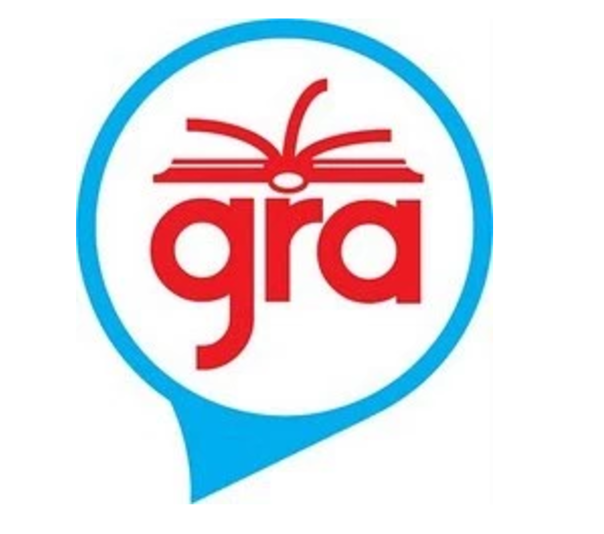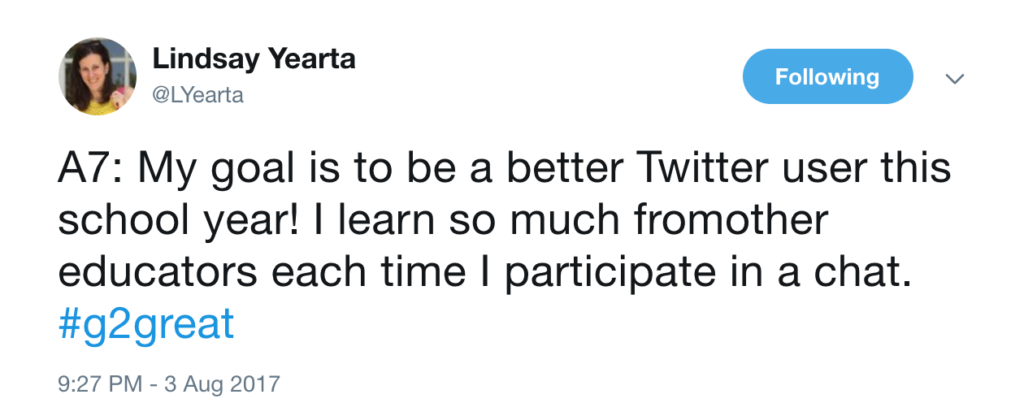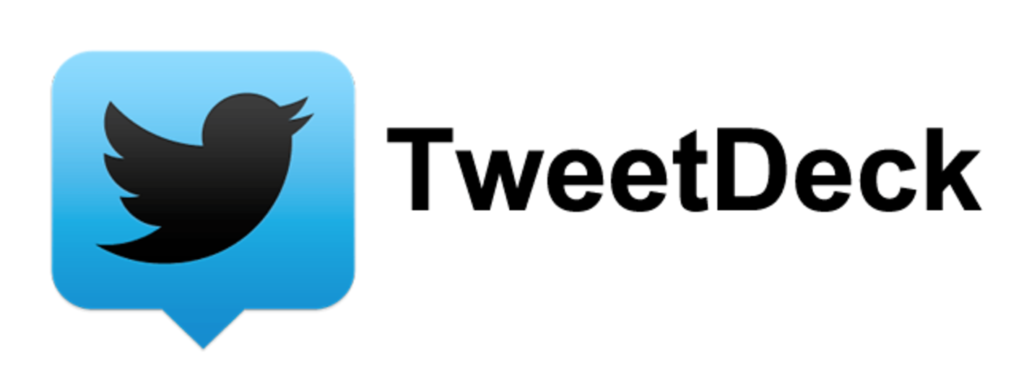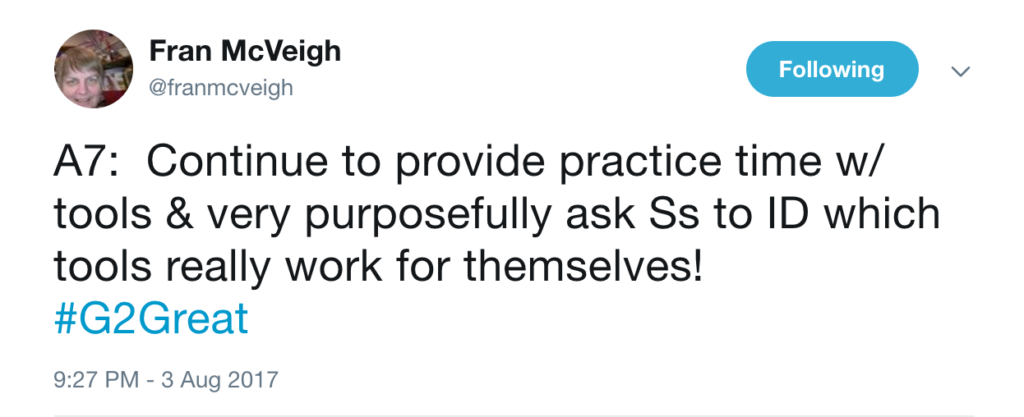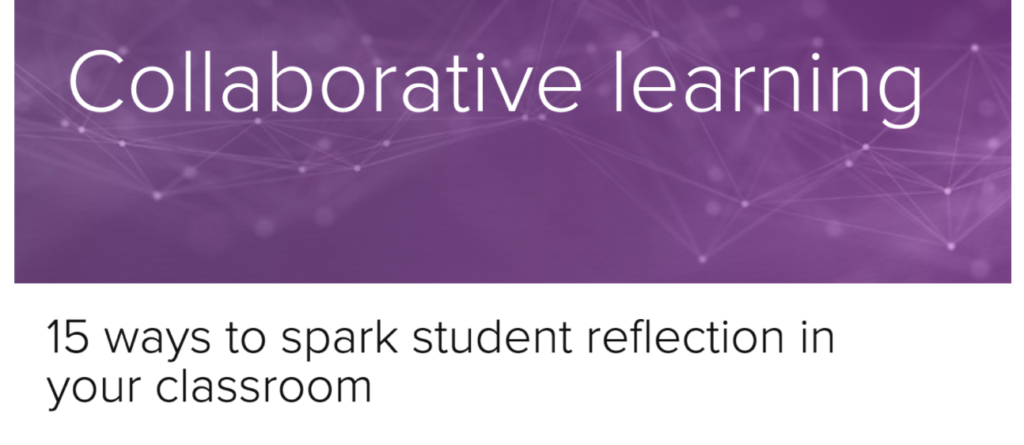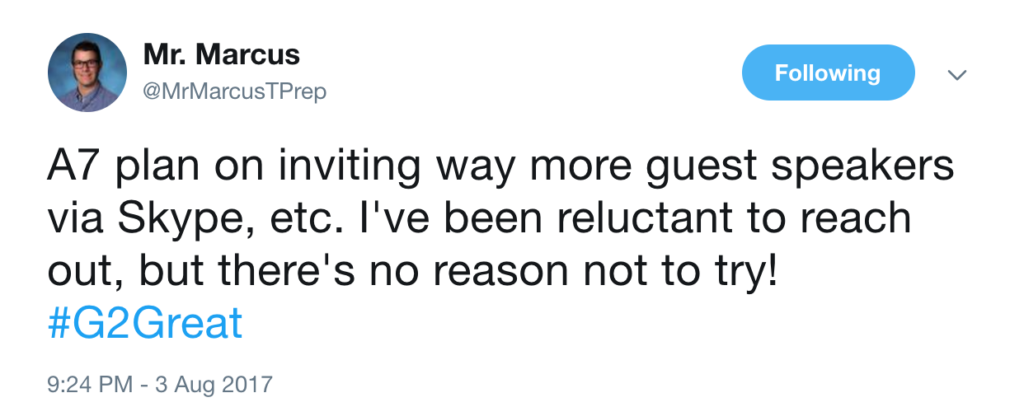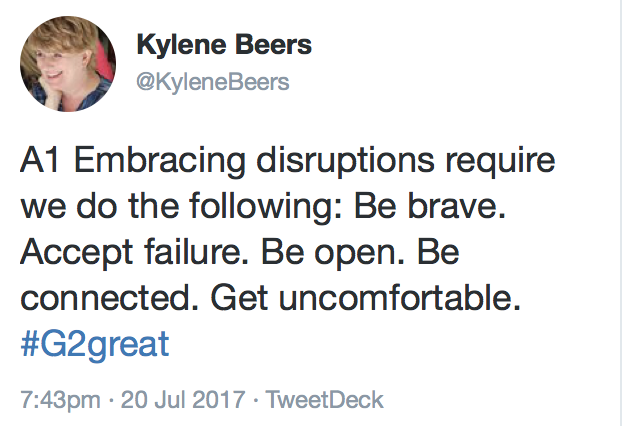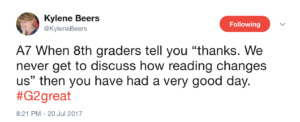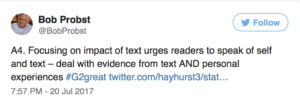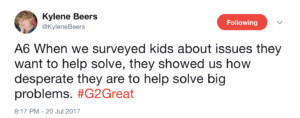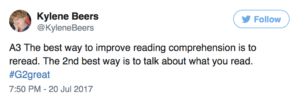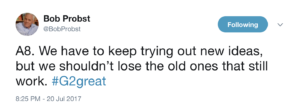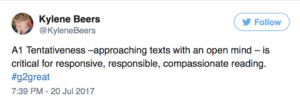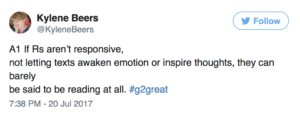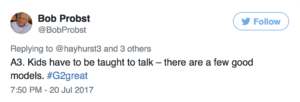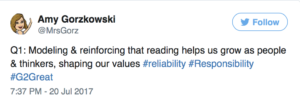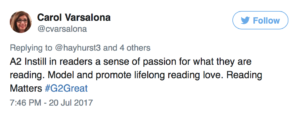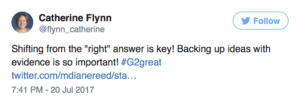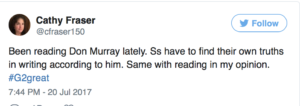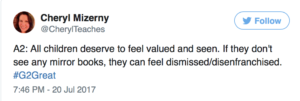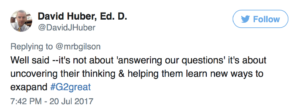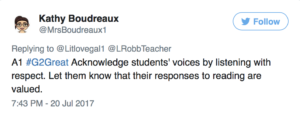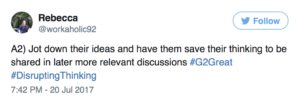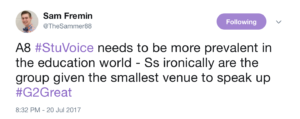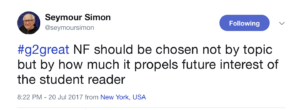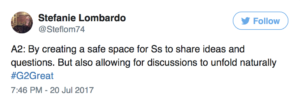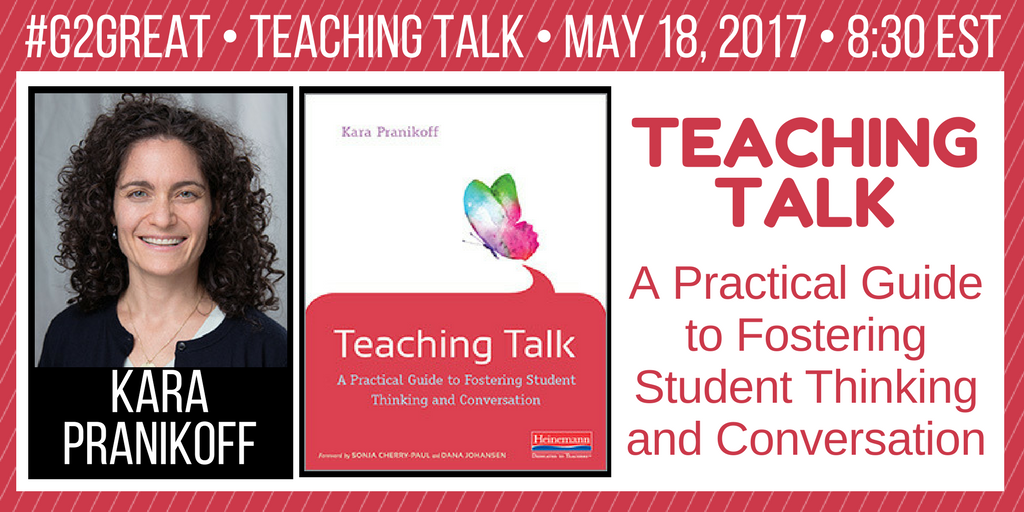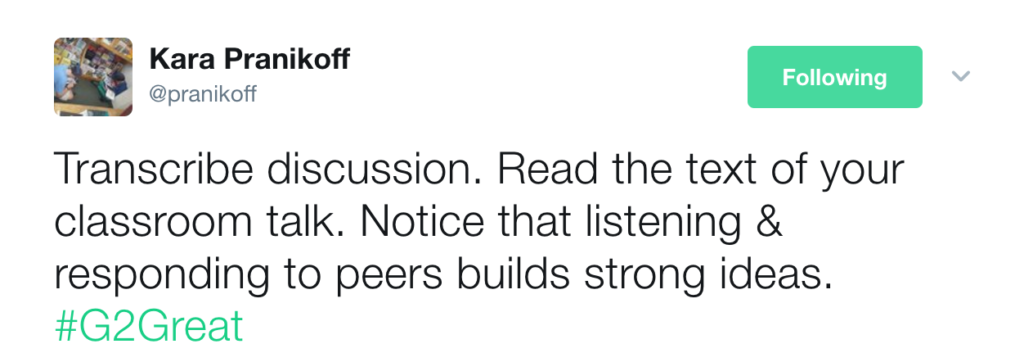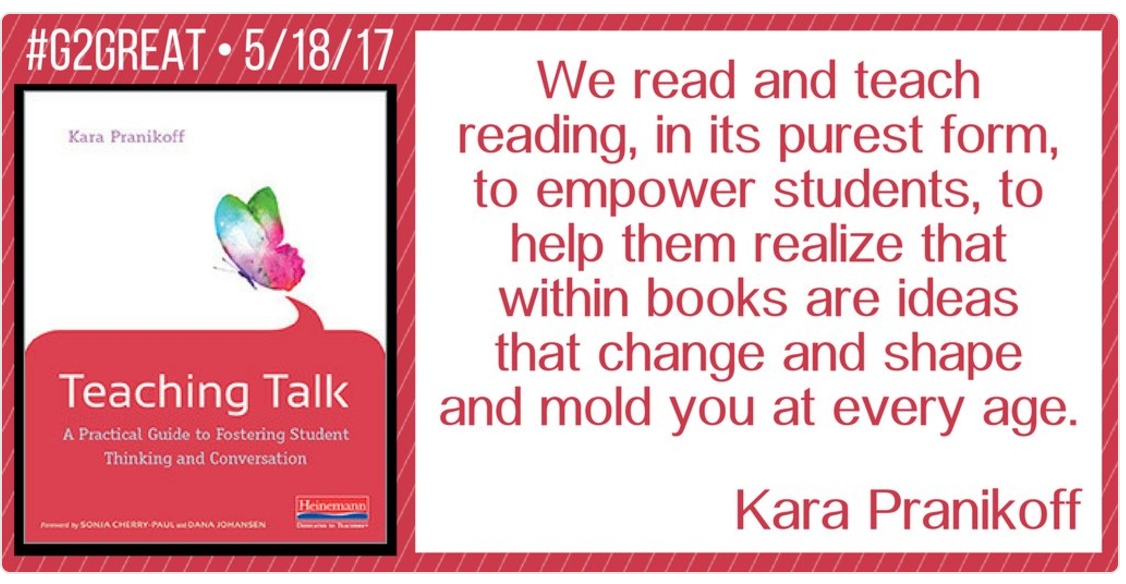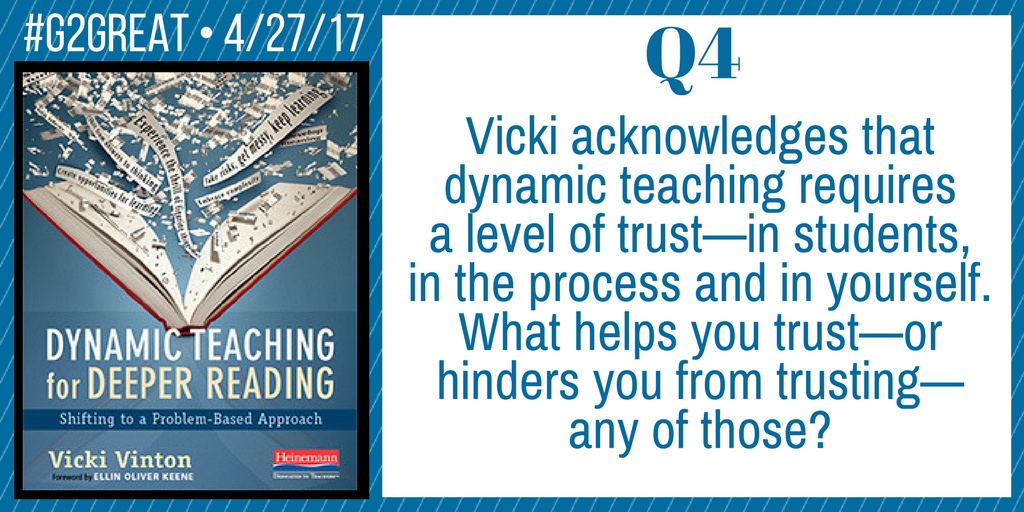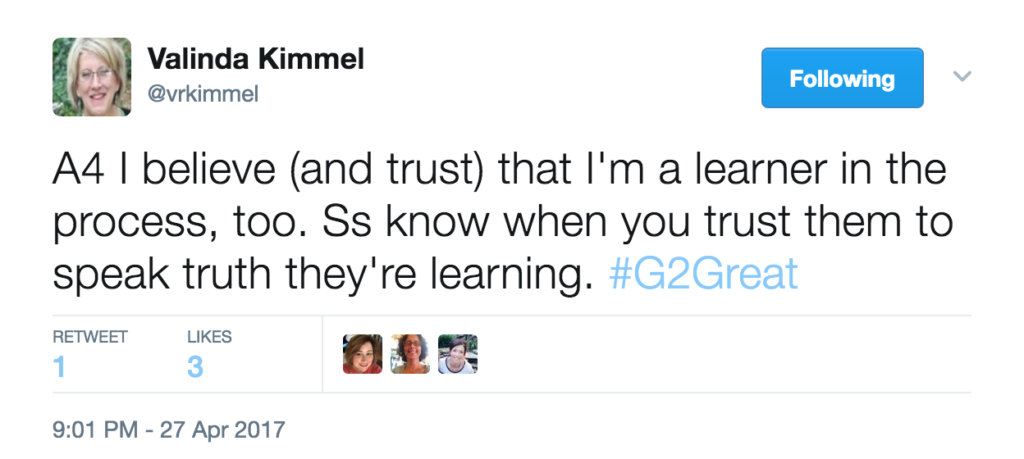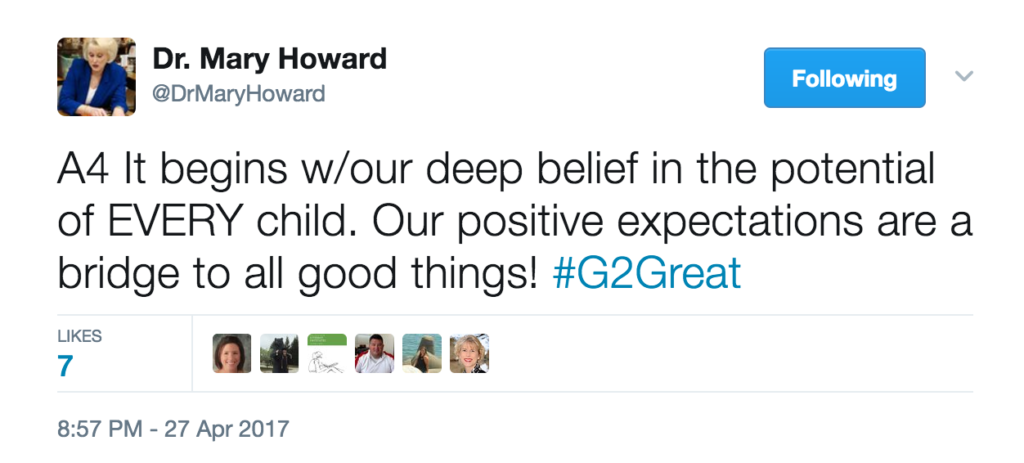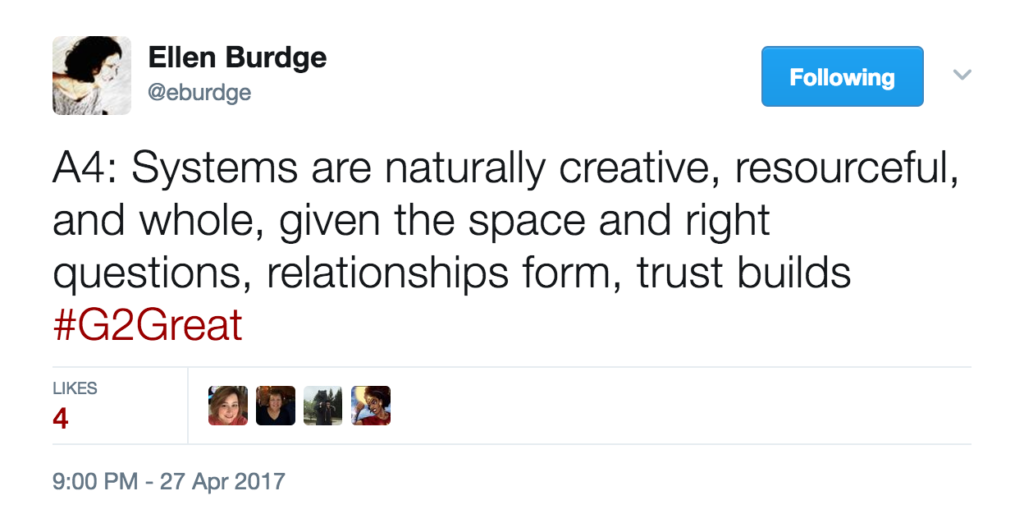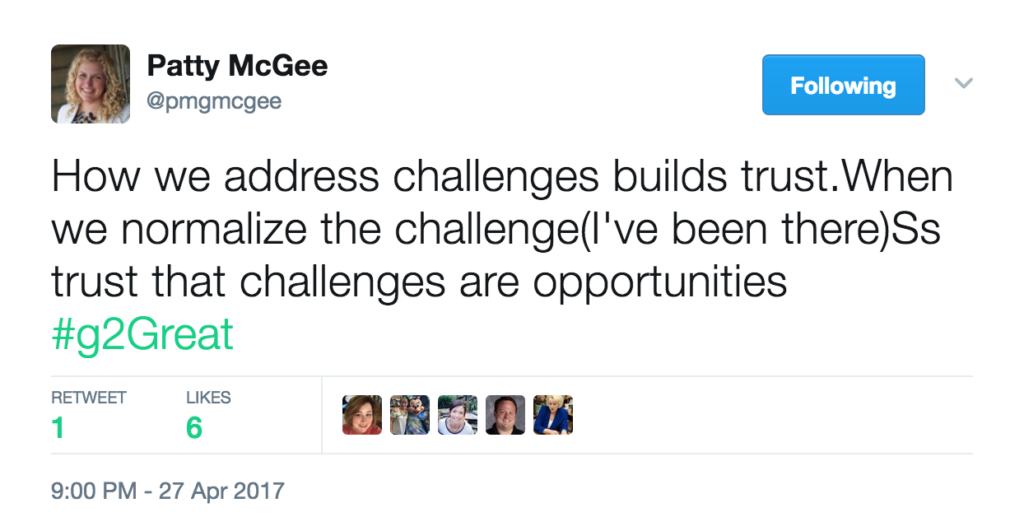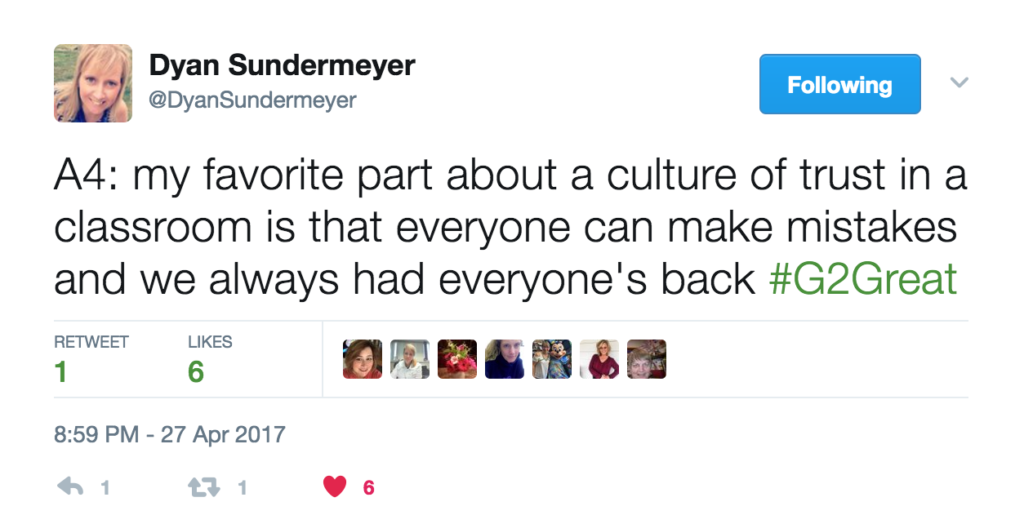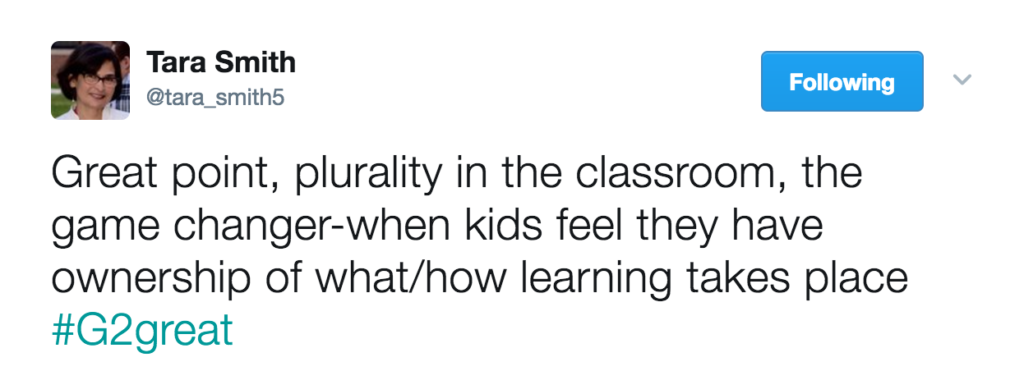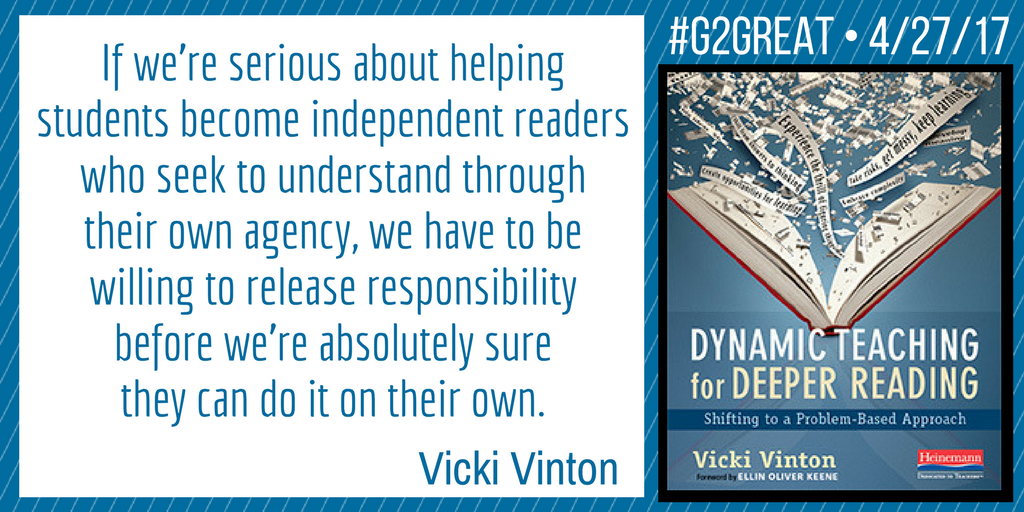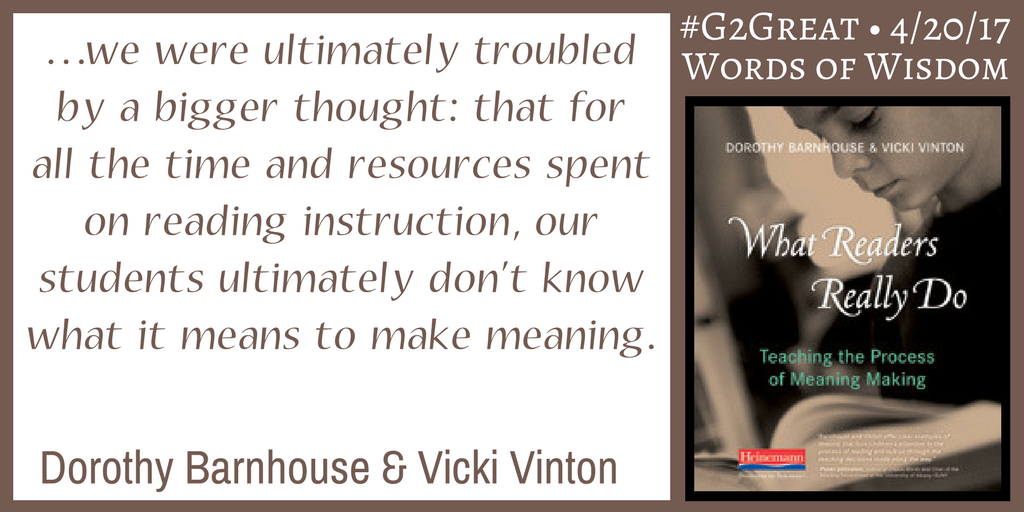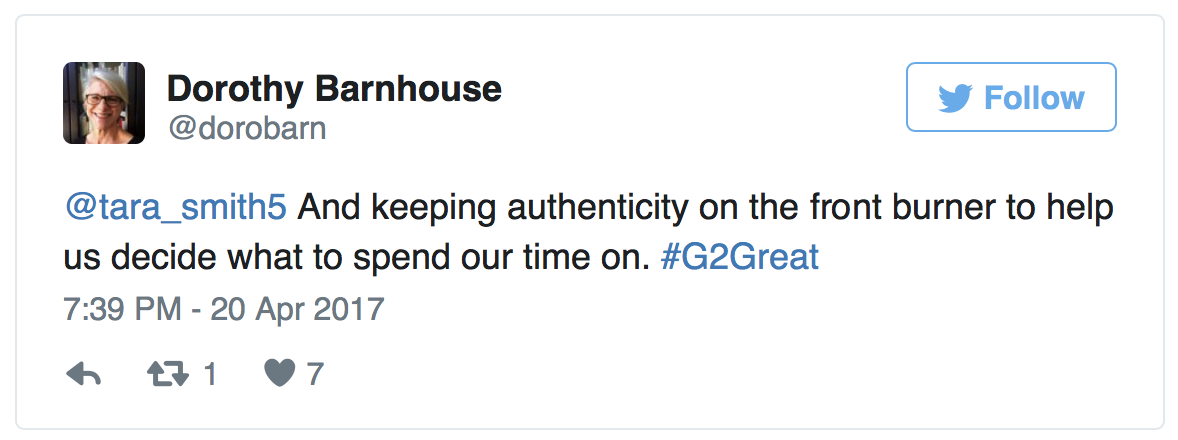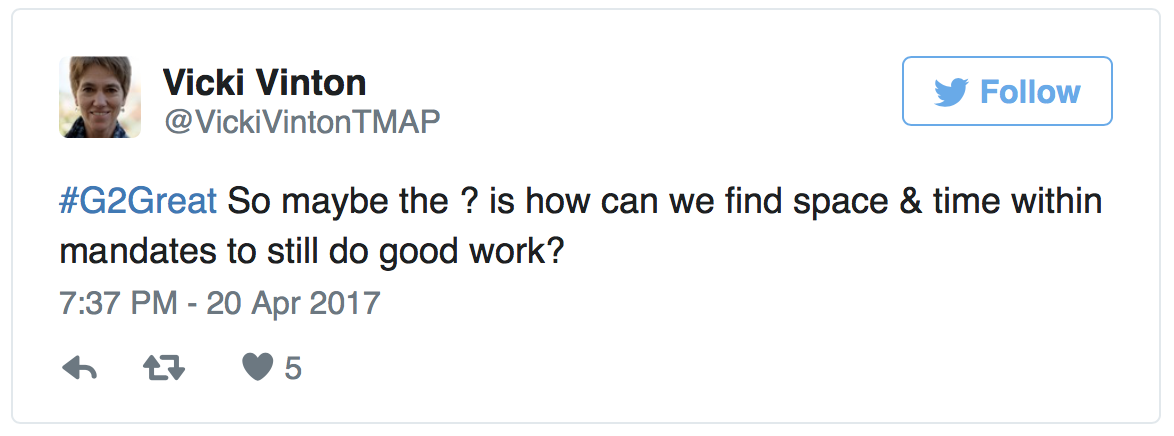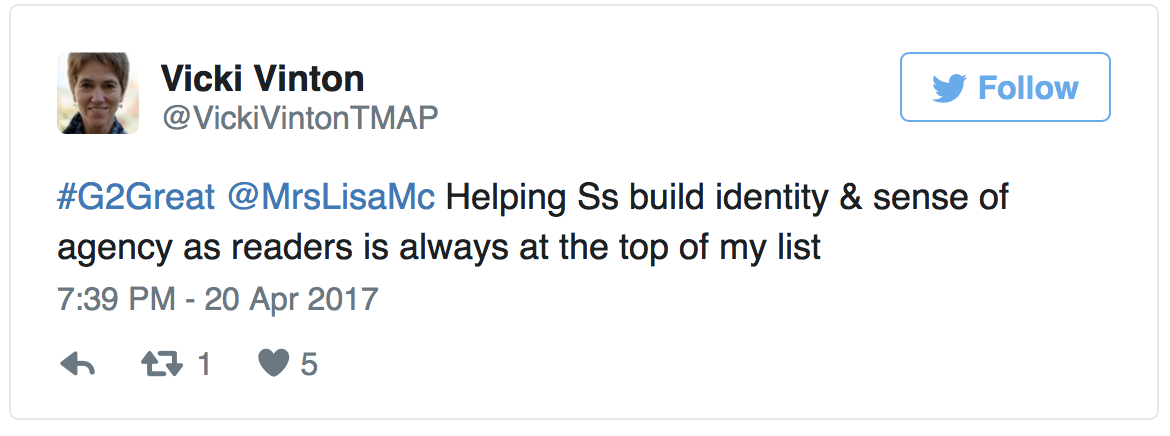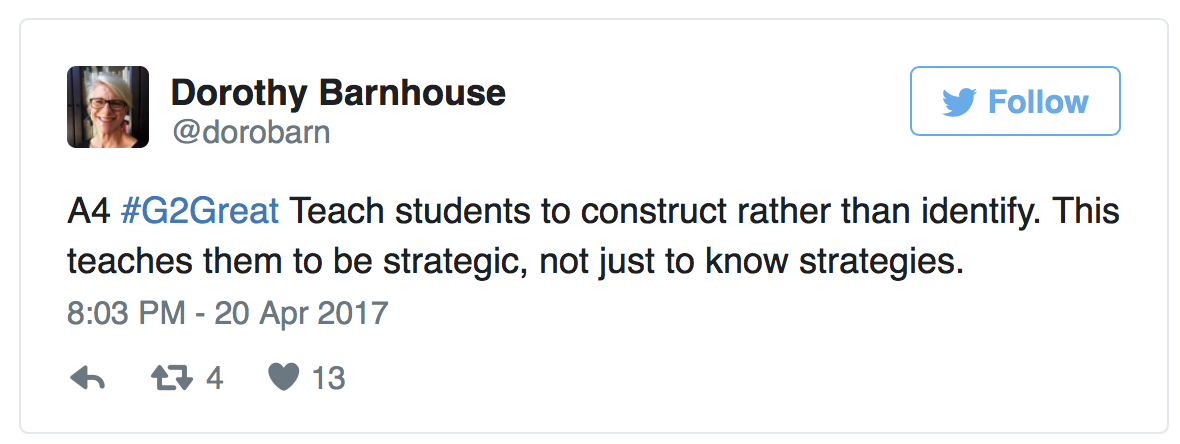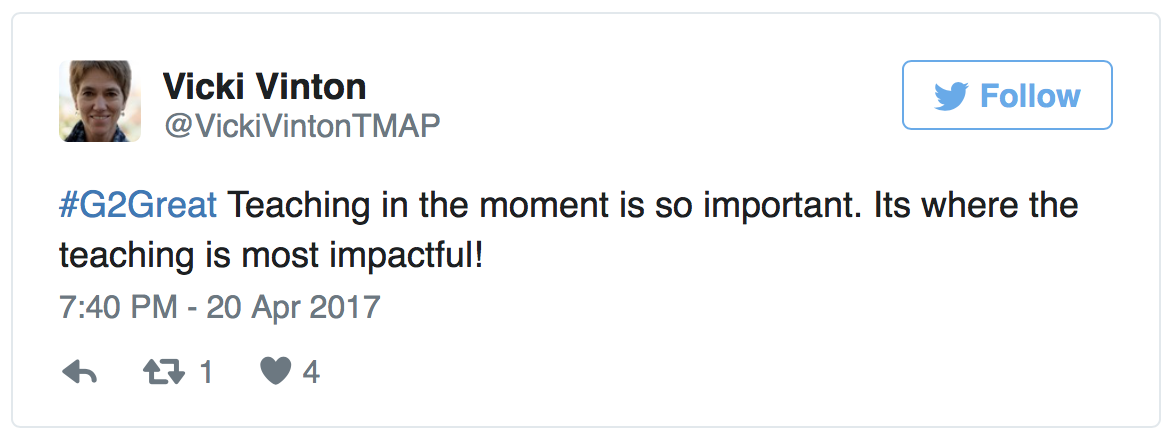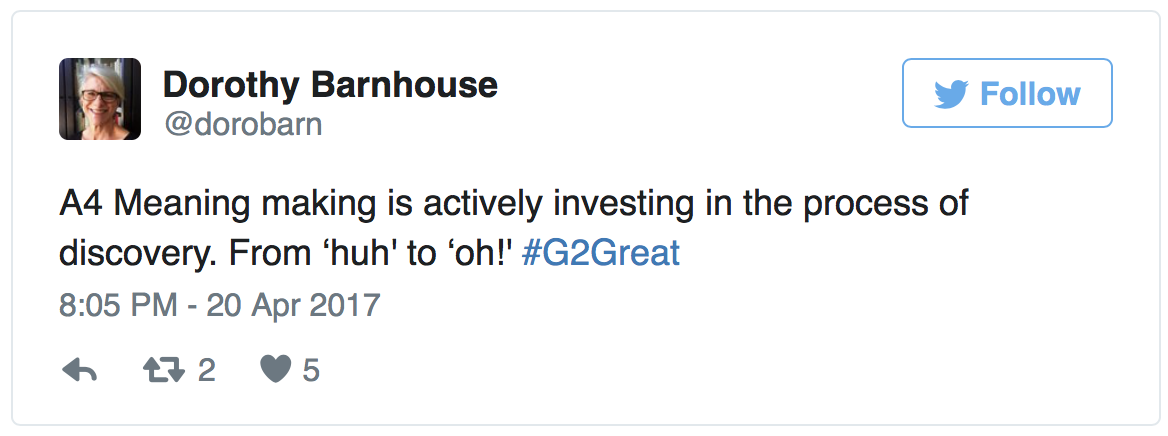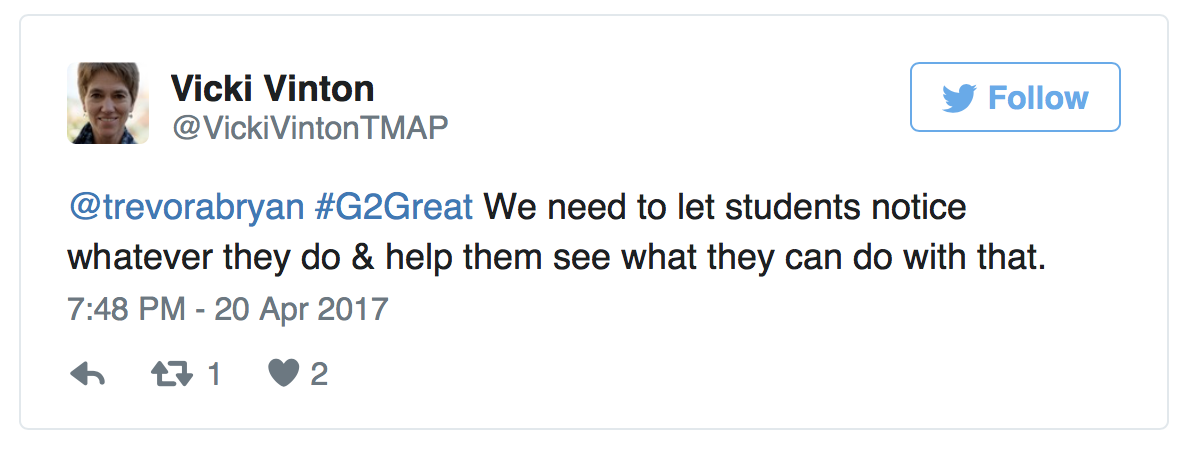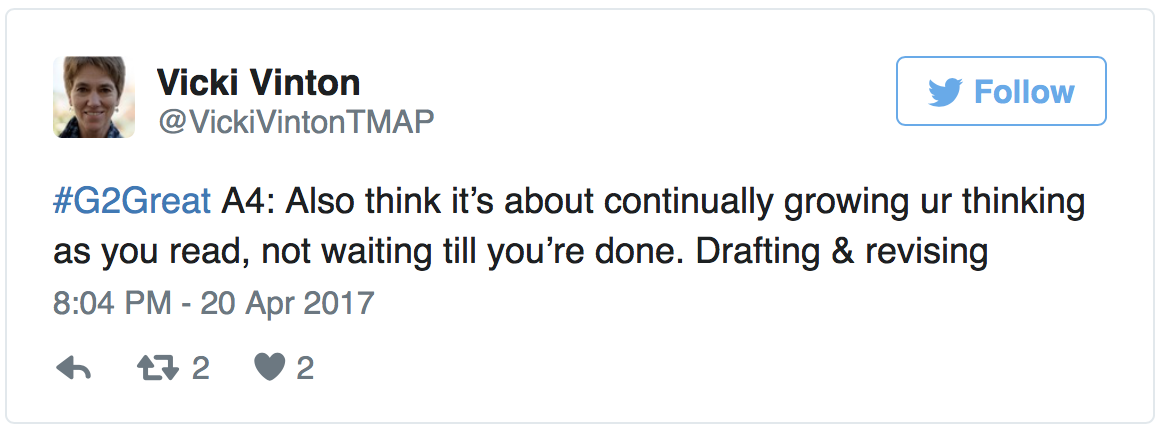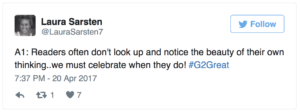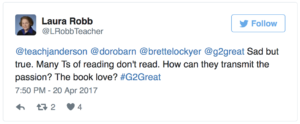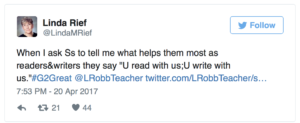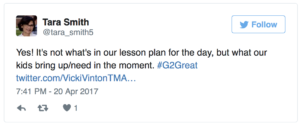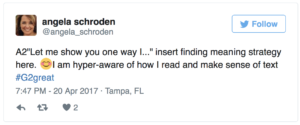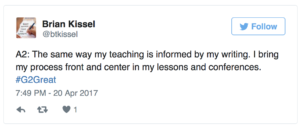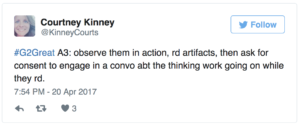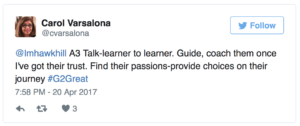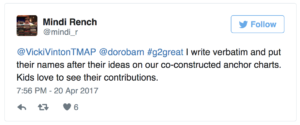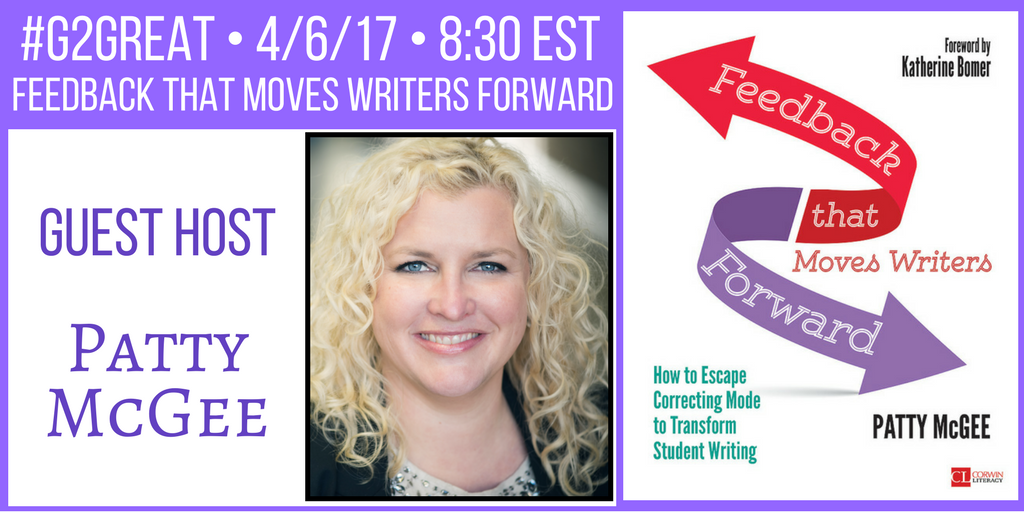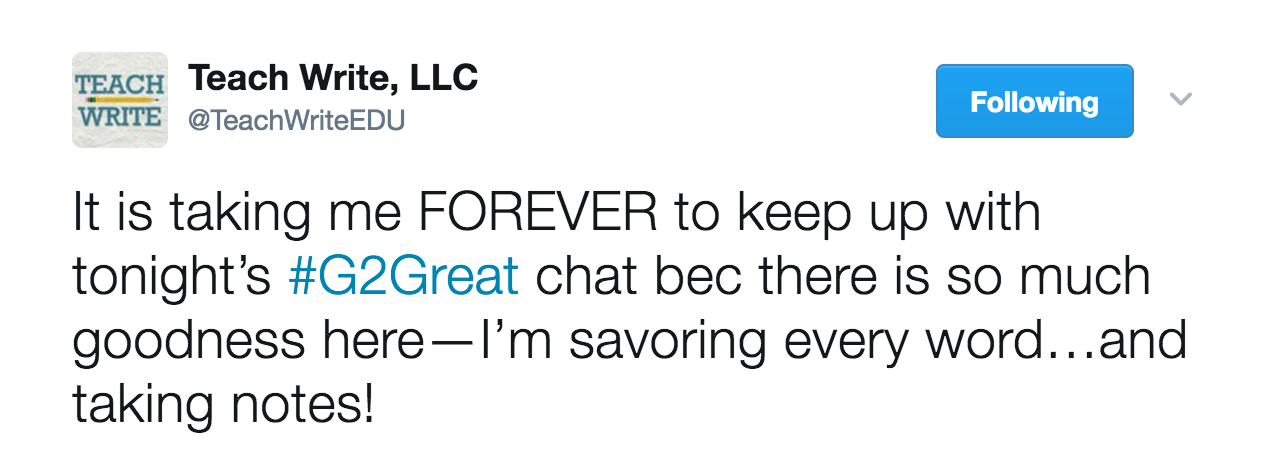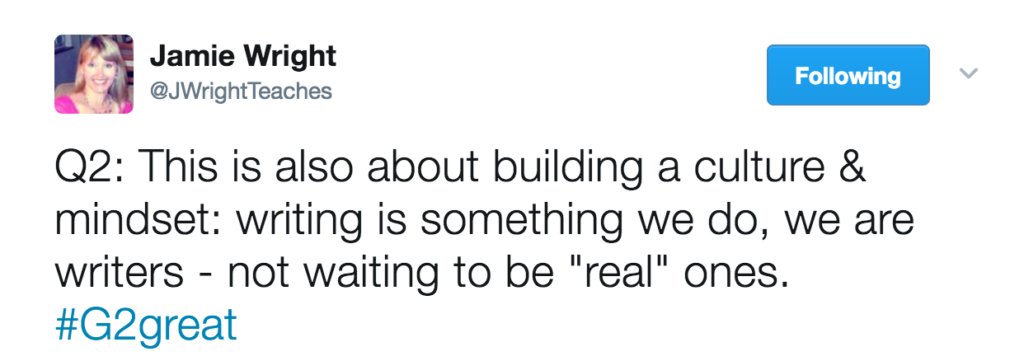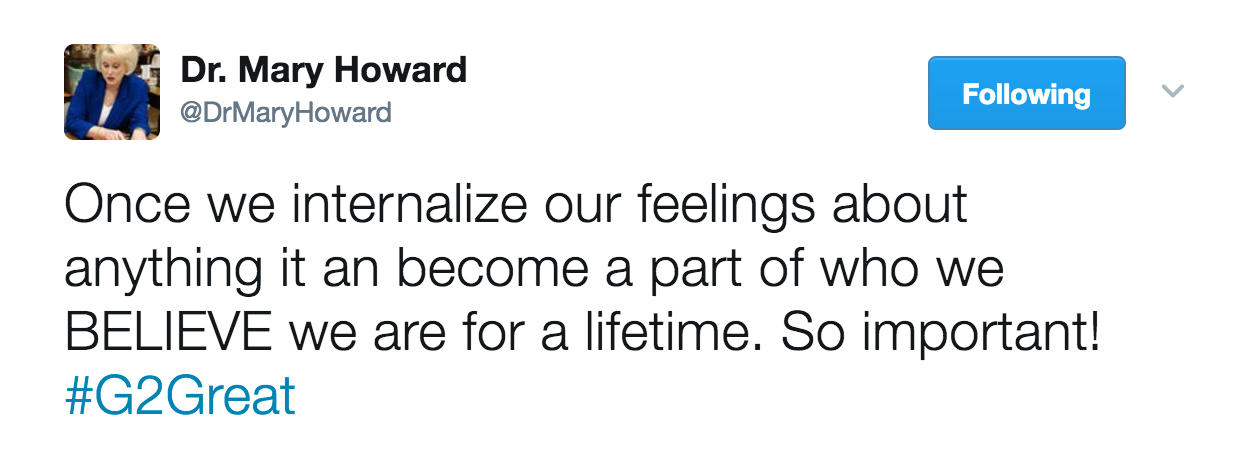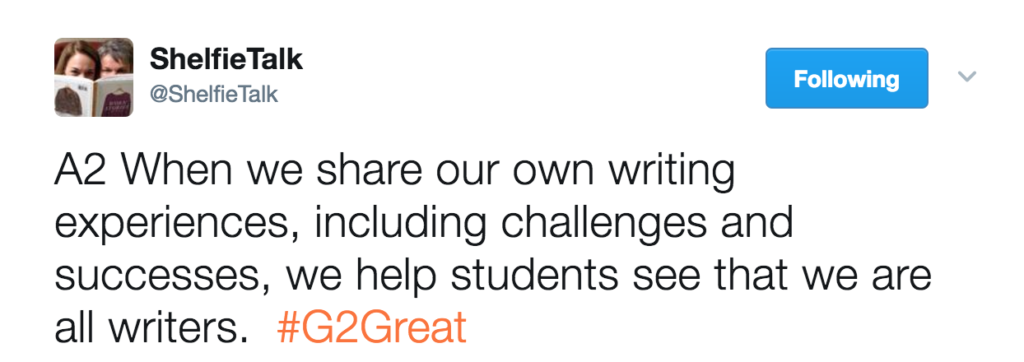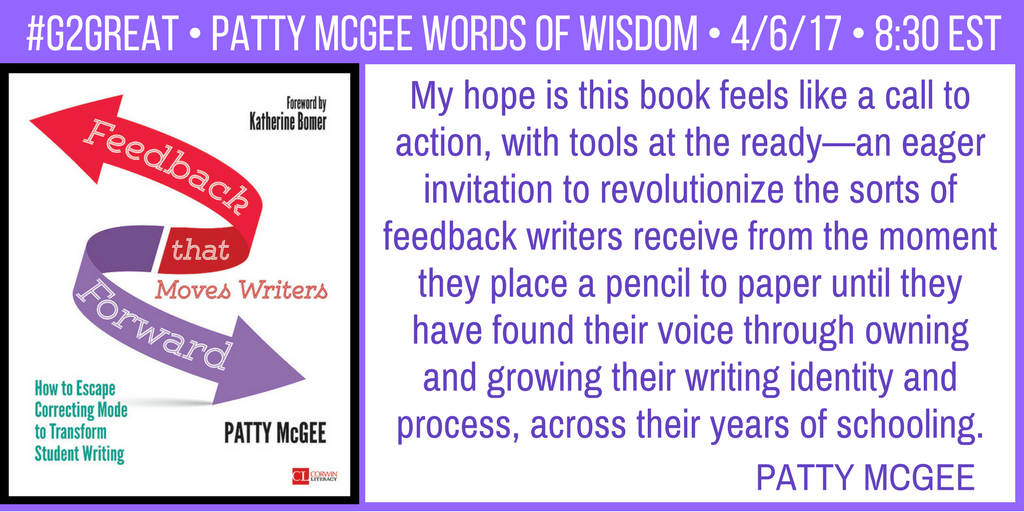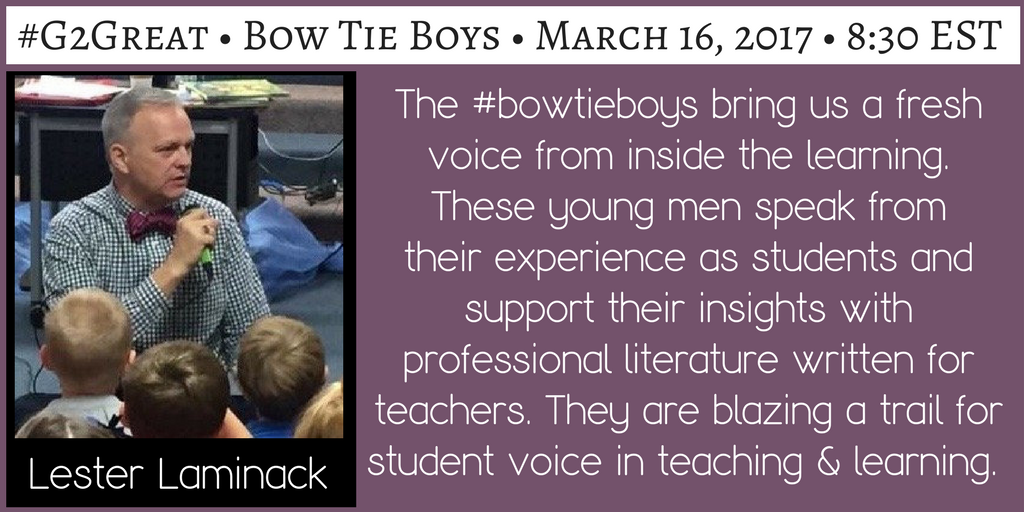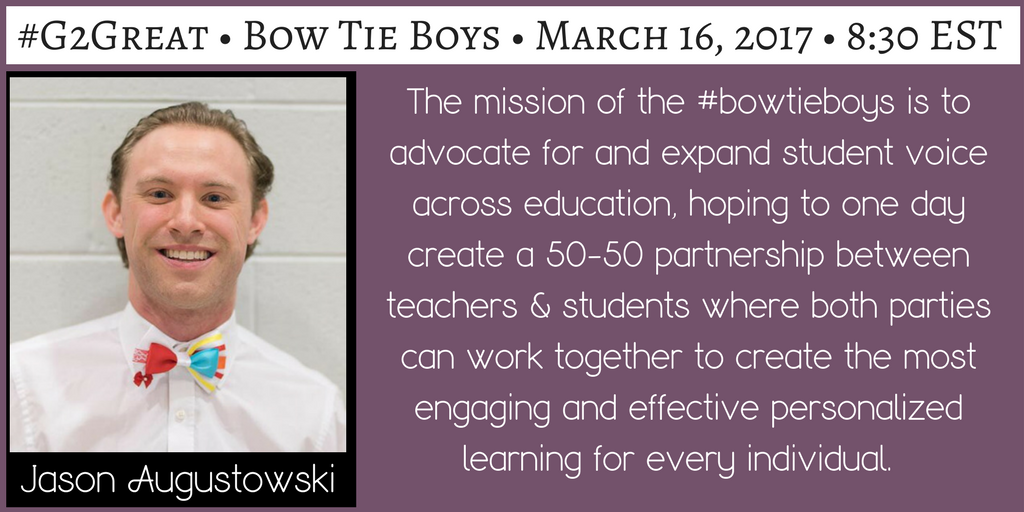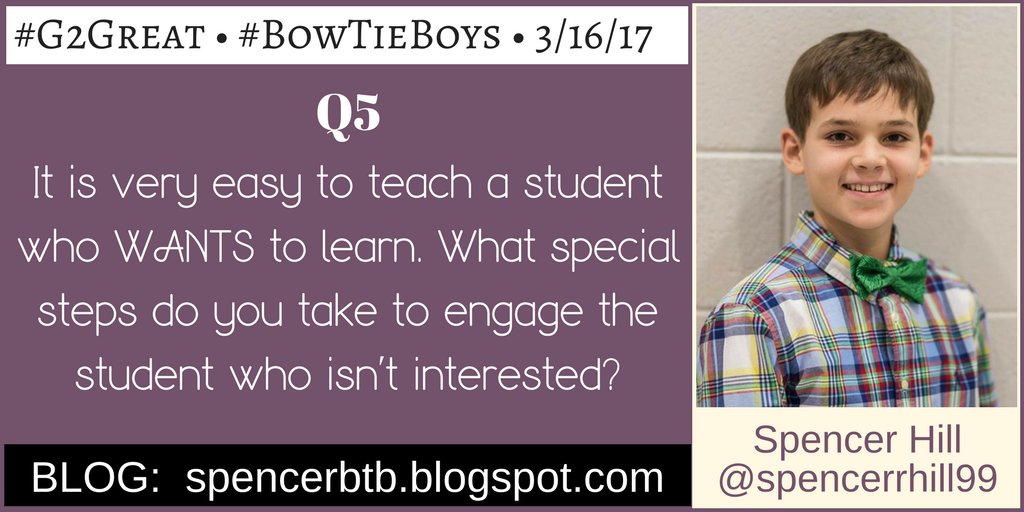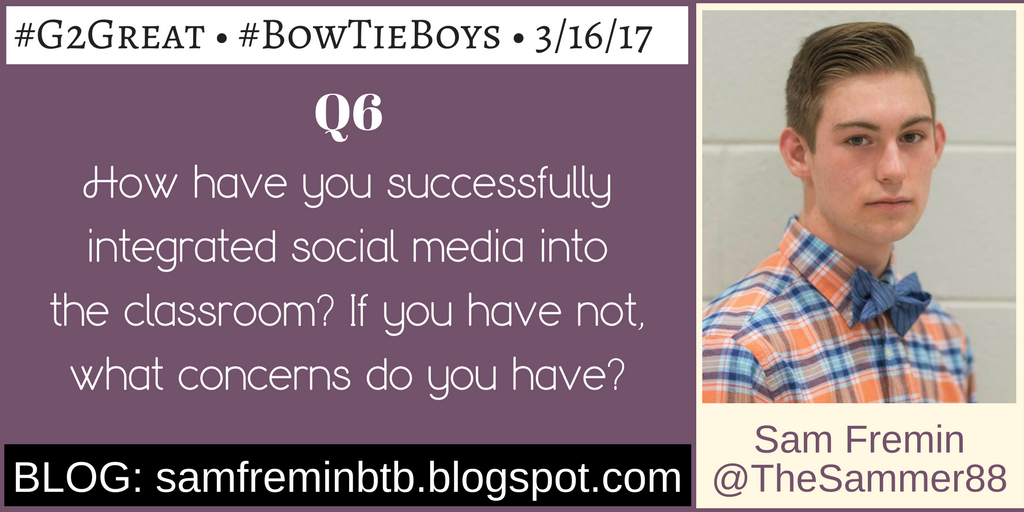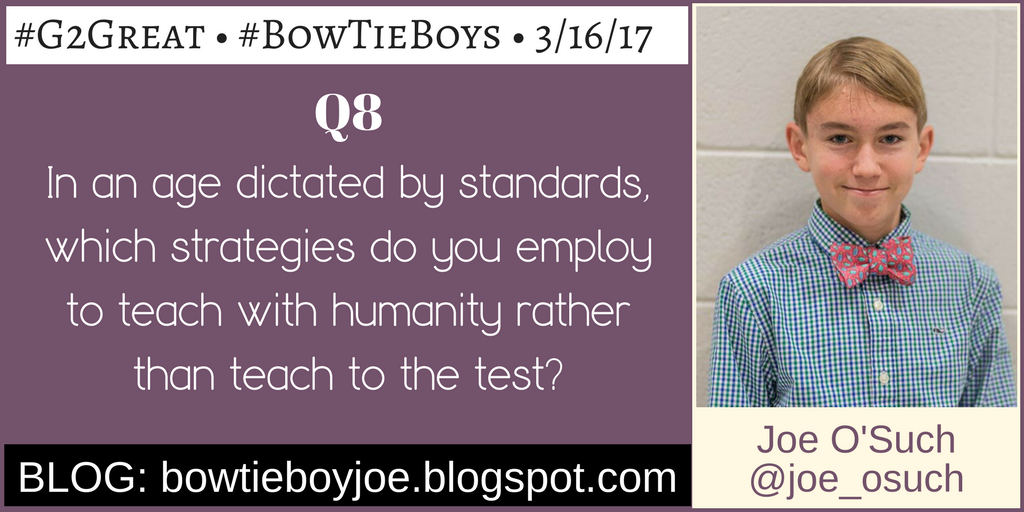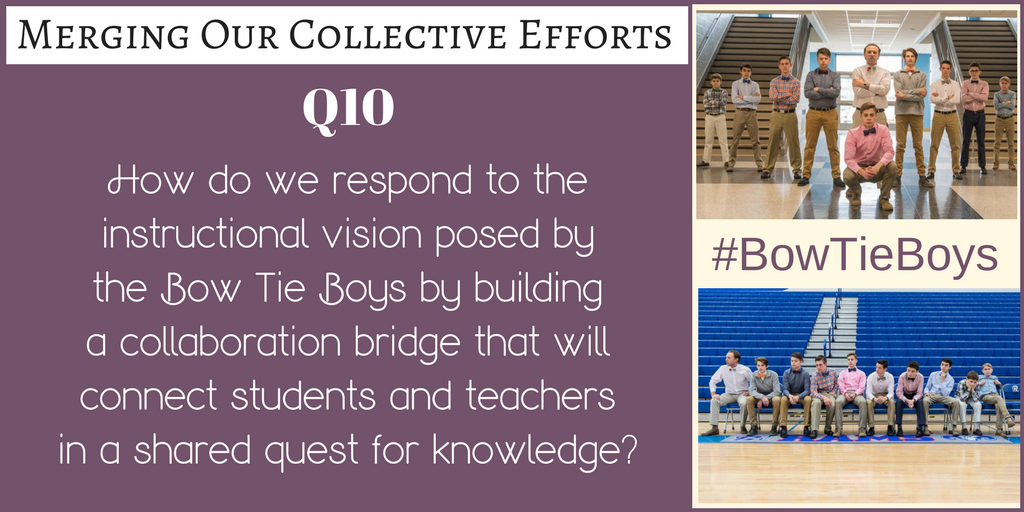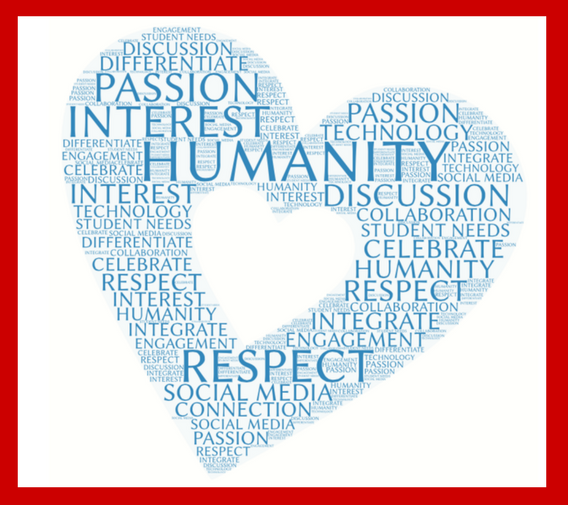by Mary Howard
On 11/2/17, we were honored to open our #G2Great door to guest hosts John Spencer and AJ Juliani. Although John was working in China at chat time, we were inspired by his presence through AJ’s reflections on their wonderful collaboration, EMPOWER: What Happens When Students Own Their Learning (IMPress, 2017)
Everything about this amazing book, from the cover title to the words and visuals across the pages, represents a passionate reminder that educators have been afforded the opportunity and responsibility to empower students. John and AJ move us closer to understanding what it means to empower students at the beginning of their book:
“We need to shift our mindset from compliance (students must follow our rules and engagement (getting kids excited about our chosen content, curriculum, and activities) to empowerment. (xxix)
The dictionary lists several synonyms for empower including authorize, entitle, permit, allow and enable but John and AJ add a powerful and unique meaning in the book:
After looking back over the chat tweets, I knew that I’d found my guiding question for this post: “How can we EMPOWER students to create their own school game as a means to maximize learning?” With this question in mind, it didn’t take long to notice that our #G2great questions offered an organizational structure for me to reflect on my question. Looking at our questions and inspired tweets from AJ and our passionate #G2Great family led me to contemplate eight EMPOWER points:
EMPOWER 1: Expend precious available minutes in responsible ways
John and AJ open their book by reminding us that time is a precious commodity. Through their calculations, we realize that we are all given the same 400 minutes in each day. But that’s where the similarities end since how we choose to expend those minutes varies widely from teacher to teacher. I love AJ’s point that we may not be able to control all of our minutes due to the inevitable and ever-present school requirements, but we can and must choose to spend limited remaining time in the most responsive ways. Eugene eloquently emphasizes that when time is finite, it is even more important that our choices reflect what we value. How we spend time is a choice so we lose right to complain about time when we choose to spend it in ways that do not positively impact students.

EMPOWER 2: Inspire students to engage in creativity and innovation
I suspect that most teachers would be hard-pressed to suggest that creating classroom experiences that are creative and innovative is not a crucial instructional goal. Yet what we acknowledge pales in comparison to how we demonstrate those beliefs through our day-to-day actions. AJ’s words that creativity must be “unleashed” rather than “found” illustrates that this isn’t about merely identifying obligatory sporadic moments in the schedule but taking specific actions that will inspire creativity and innovation in ways that in turn inspire students and teachers to want even more creativity and innovation. Matt reminds us that we do this by ensuring students play a role in our instructional planning conversations as we make student voice and choice a priority.
EMPOWER 3: Take a stance to make student choice a daily priority
This idea that student voice and choice is an essential component of each learning day is a perfect segue to zoom in on choice as a primary factor of empowerment. AJ emphasizes that choice leads to ownership and thus empowerment and deep learning. This means that our willingness to offer choice in the learning process can have a positive or negative impact on student learning. Fran made the point that for many children, this has not been part of their ‘school game’ reality. This inspires us to begin to craft a new reality as we incorporate choice into each learning day and do so in the most authentic possible ways.
EMPOWER 4: Embrace technology as a window to the world
Any time the discussion turns to empowerment, technology will inherently become part of that conversation. Technology reflects the world that our students reside in and so it makes sense to invite that world into our classrooms. AJ reminds us that technology is not a curriculum add-on but a powerful tool that can be seamlessly integrated into every learning day. I love AJ’s description of technology as an “on-demand experience.” This motivates us to shift our perspective from an activity we schedule to what we can bring to the learning table any time of day. Roman also reminds us that breaking down our school walls to willingly incorporate technology opens this world to students and expands their horizons and our view of what is possible.
EMPOWER 5: Understand the distinction between fail-URE and fail-ING
I found myself reading and rereading chapter 9 (page 147 to 156) as I was intrigued by these distinctive terms. I was clearly not alone in my fascination since many others took notice of this notion as well. AJ helps us understand these terms by considering one as an end point (Fail-URE) as often reflected by grades or test scores while the other is viewed as learning that can change over time (Fail-ING) through experiences that will support new or growing learning. I loved Rebekah’s description of Fail-ING as a process of ‘evolution, forward movement, and growth.’ This view celebrates the messy process of learning that occurs when we are willing to give students time and support to view that mess as a learning opportunity.
EMPOWER 6: Amplify the potential of your professional impact
AJ highlighted a key goal that can help us dramatically accelerate our impact potential. Empowerment is not simply what we do during the learning day but what students are able to do after the learning day is over when they leave our care. Our children will live in the world of the future and so we create learning opportunities that will prepare them for that world because we believe that they could make a difference by making that world a better place than it would have been without them. Vicki reinforces this point by referring to the ripple effect that can move learning from our personal instructional space out into the world that exists beyond that space.
EMPOWER 7: Broaden assessment to include your learner voices
I smiled when I read the title for chapter 8: “Assessment should be fun. No, really we’re serious.” (page 125) It’s hard to envision that spirit given the current testing and grading climate. Yet AJ asks us to acknowledge that effective assessment (the “fun” kind) is about much more than a grade. Authentic assessment invites students to become an integral part of those assessments. Amanda reminds us that this is not about a grade or score that focuses on a product but the process students engage in as they are immersed in that learning experience. Once we are willing to adjust our emphasis on the process, we make room for students to ssume a central assessment position.
EMPOWER 8: Create a flexible instructional student-centered design
In our final chat question, AJ acknowledges that empowerment is not about giving students free rein but widening our perspective as we incorporate a more flexible view. He reminds us that this is not an either-or proposition since we can offer students a supportive structure while still making room for empowerment through student choice in content. Christina reinforced this point by emphasizing that we must relinquish our control as ‘keeper” of every learning experience in order to open the door to discovery. When we create an environment that feeds student-inspired curiosity, then discovery and empowerment are likely to follow.
When I wrote our #G2Great chat questions as I read Empower, little did I know that John and AJ would not only inspire those questions but also inspire this post. Through their book and our #G2Great chat we are given an opportunity to initiate an exploratory venture that addresses my initial question: “How can we EMPOWER students to create their own school game as a means to maximize learning?” As I look back on our chat, I think this begins by giving ourselves permission to invite students to OWN learning and thus craft their own game. I can’t imagine a more relevant goal to work toward. We are so grateful to John and AJ for moving us ever-closer to empowering student learning and we know that we are about to launch on a worthy and exciting journey side-by-side with our student.
Perhaps the first step in this new game plan is illustrated in a tweet from Trevor Bryan.
See what else our amazing #G2Great friends said
AJ website http://ajjuliani.com
Joh blog http://www.spencerauthor.com
John Spencer You Tube: https://www.youtube.com/user/oursocialvoice
Follow their book on Twitter at #empowerbook


